Part 5 WA Trip
To Hyden and Back, Esperance and Home
Leaving Albany, we intended to spend a few days at Esperance before heading home. However, the forecast for Esperance for the next couple of days was dismal, so instead, we decided to visit the town of Hyden inland, about 345 km. It was a long day’s drive, starting in drizzling and then heavy rain. We had to pass through the heavy storms predicted for Esperance later that day. The drive was uneventful and passed through wheat farms, forests, small country towns and lakes. We took our time and arrived mid-afternoon. The town is part of the Wheatbelt and has a population of under 400 people. It is the home of several well-known tourist attractions. We parked on the main road alongside an open area with an array of iron sculptures depicting the area’s history. They were unique structures mainly made up of iron and tin. Unusual and difficult to describe, check out the photos below. After browsing, we referred to wikicamps for a nearby camp. Setting up quickly, we headed off to the main tourist attraction Wave Rock.
This is one of Australia’s most recognisable landforms. A massive granite rock rising 15 metres from the ground and stretching more than 100 metres in length. Earlier in our trip, we had seen a smaller version of a wave rock, Pildappa rock, near the Gawler Ranges in SA, which we were amazed at. This one is much bigger, and the wave effect is quite pronounced. Hopefully, the photos will give you an idea of the angle. This curved cliff face has been shaped by weathering and water erosion, undercutting its base and leaving a rounded overhang. The deep grey, black and sandy striped wave and the varying colours of Black, grey, and sandy appearing as stripes in the rock are caused by minerals being washed down the face of the rock. It is possible to walk the perimeter or climb the rock and walk across the top surface. You will see great views from the top and some interesting rock piles. It is spectacular and very photogenic. The afternoon was turning cold, so we headed back to our camp and readily started up our pit fire once again.
The following morning, we headed out to see Hippo’s Yawn, a 12.6-metre granite rock that looks like a large hippopotamus yawning intensely. Further along, we visited Mulka’s Cave. There is an aboriginal legend associated with this area. The link will explain the story in more detail than I can do here. www.australiasgoldenoutback.com This finished our morning, and we took off for the four-hour drive to Esperance
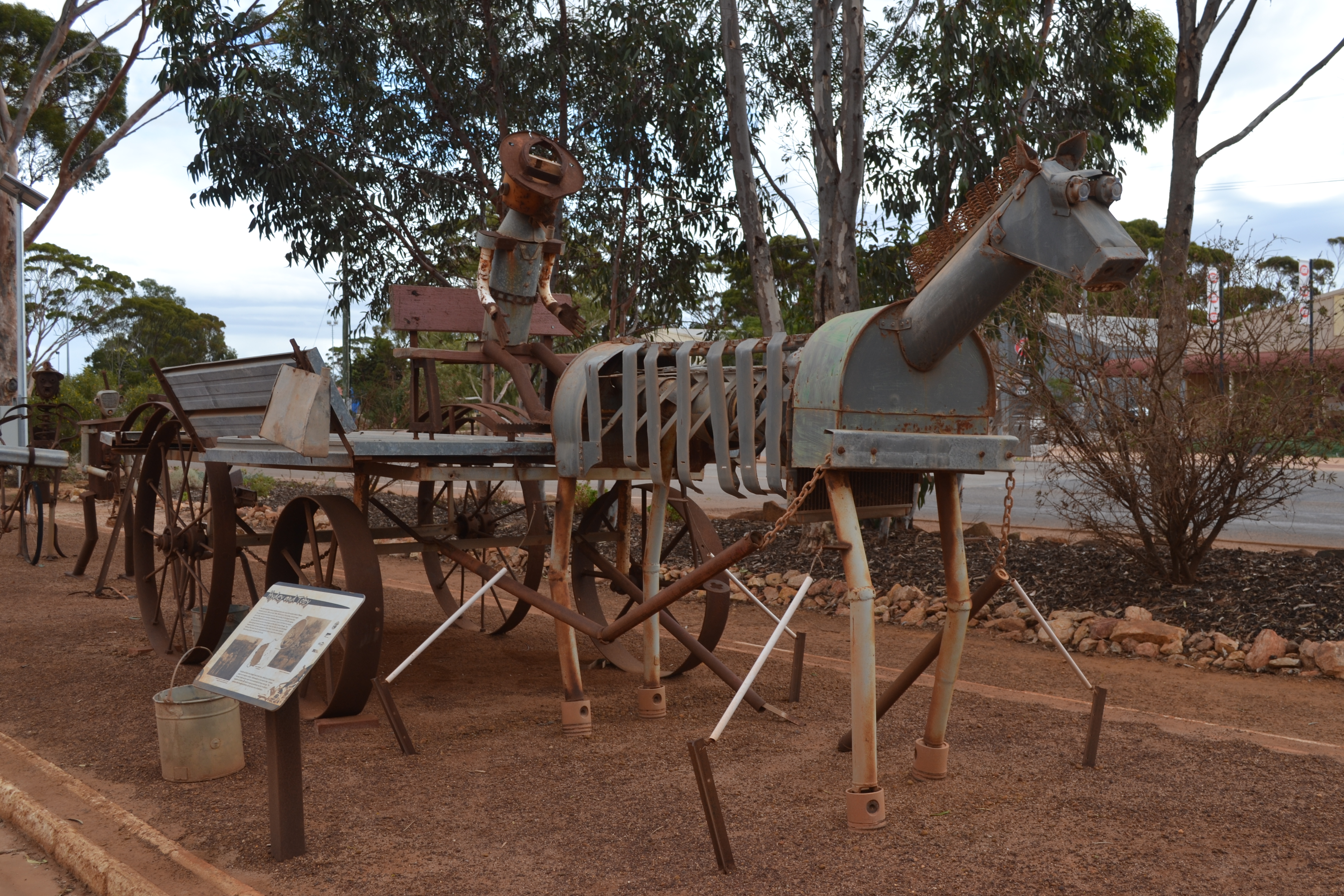

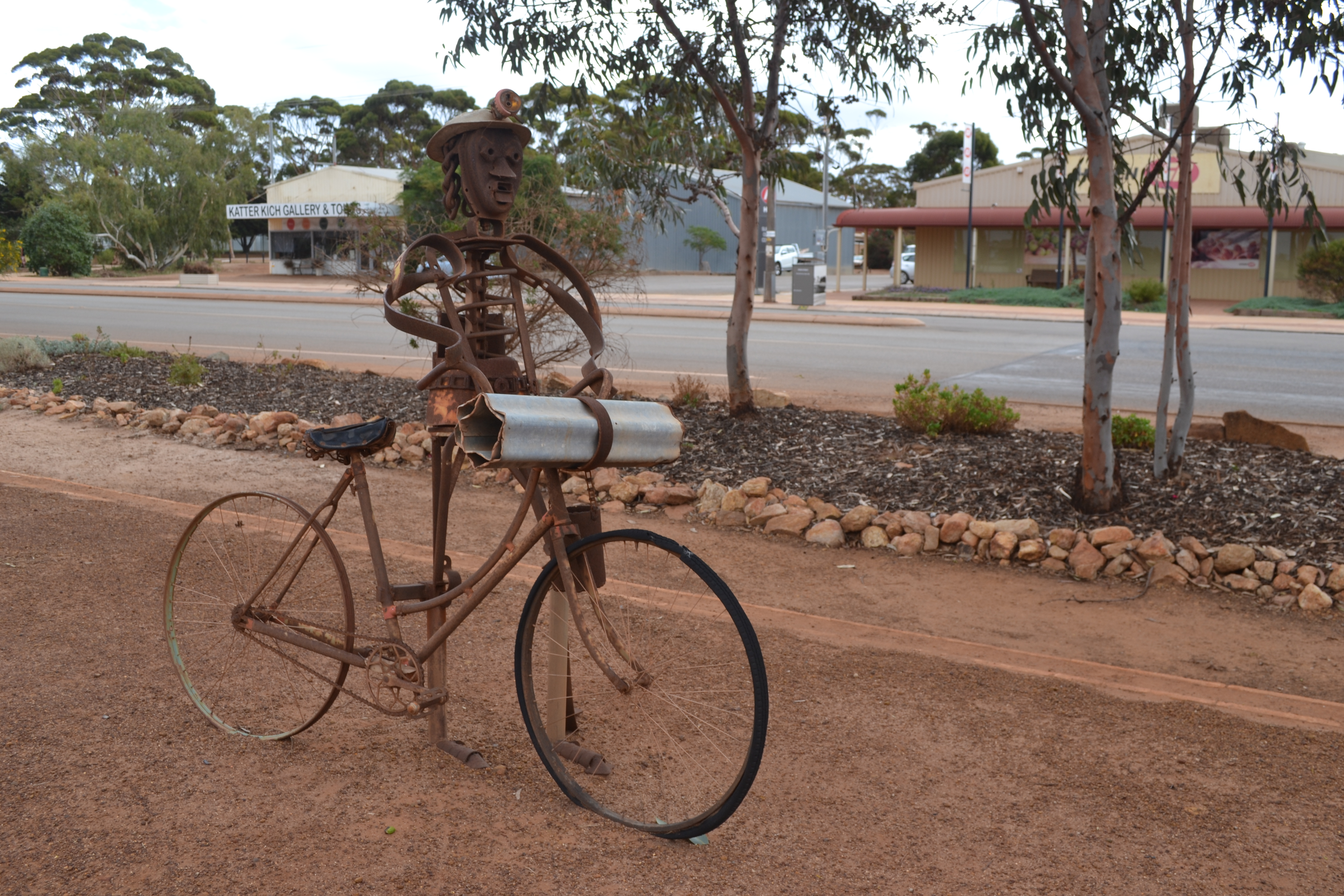
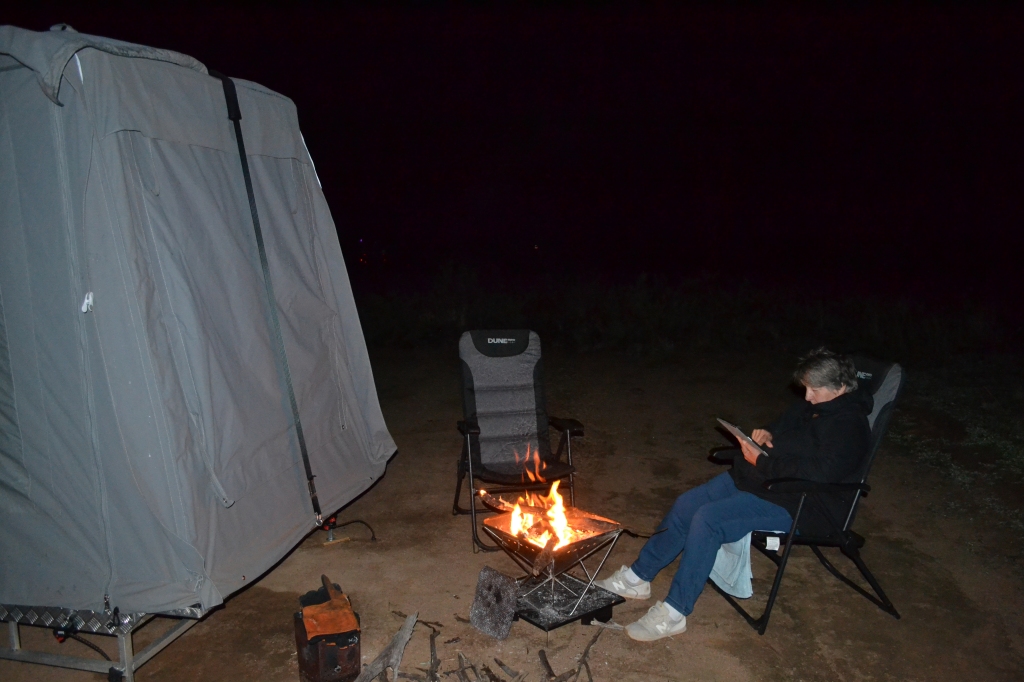
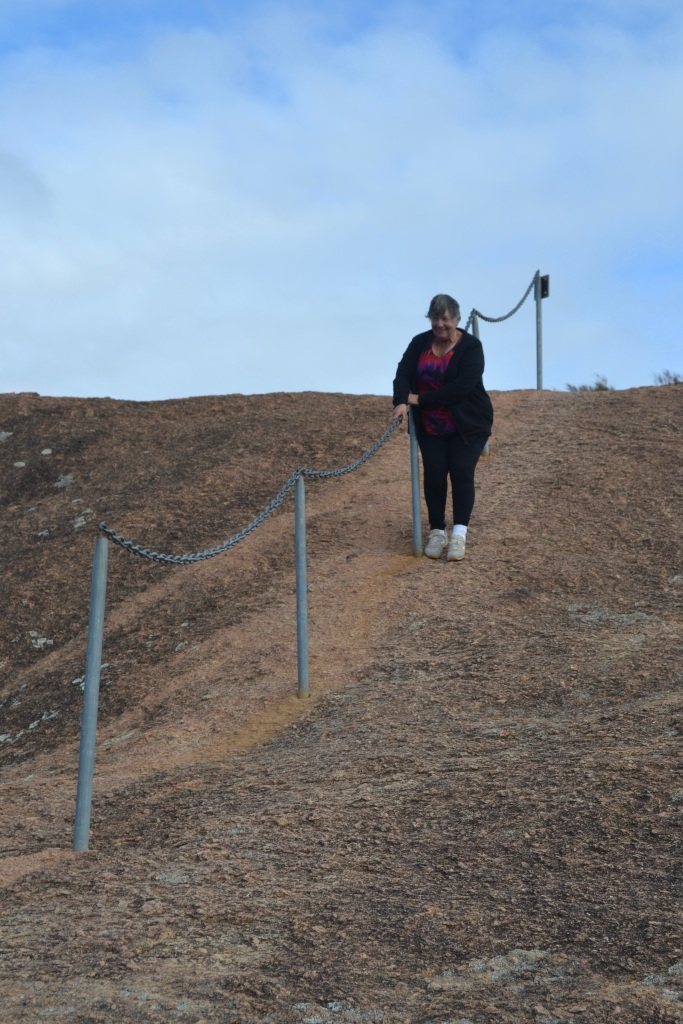

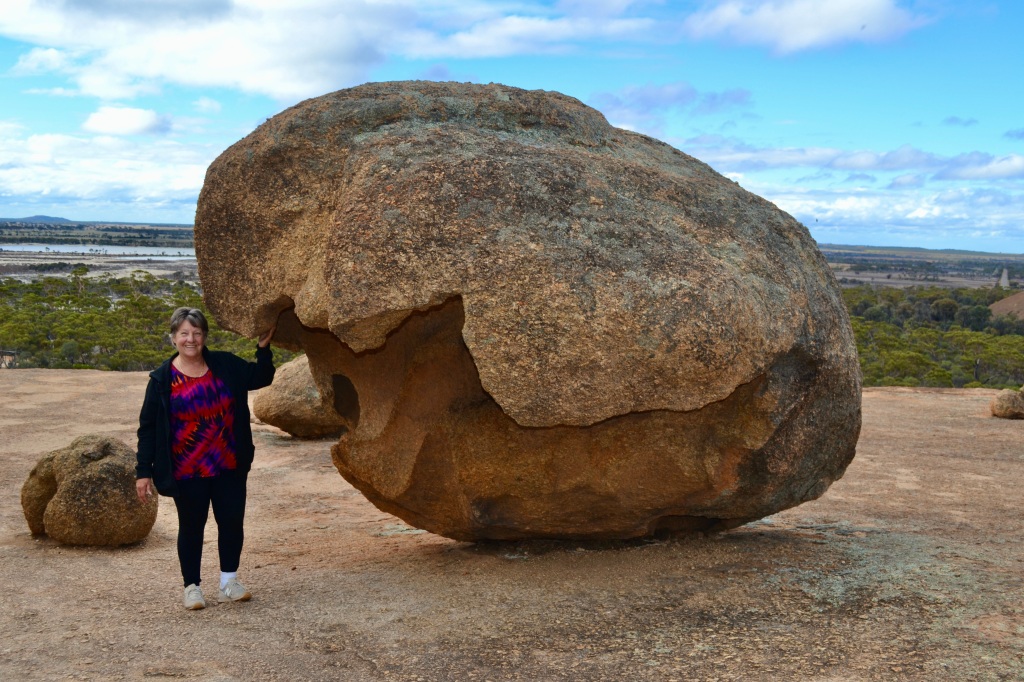
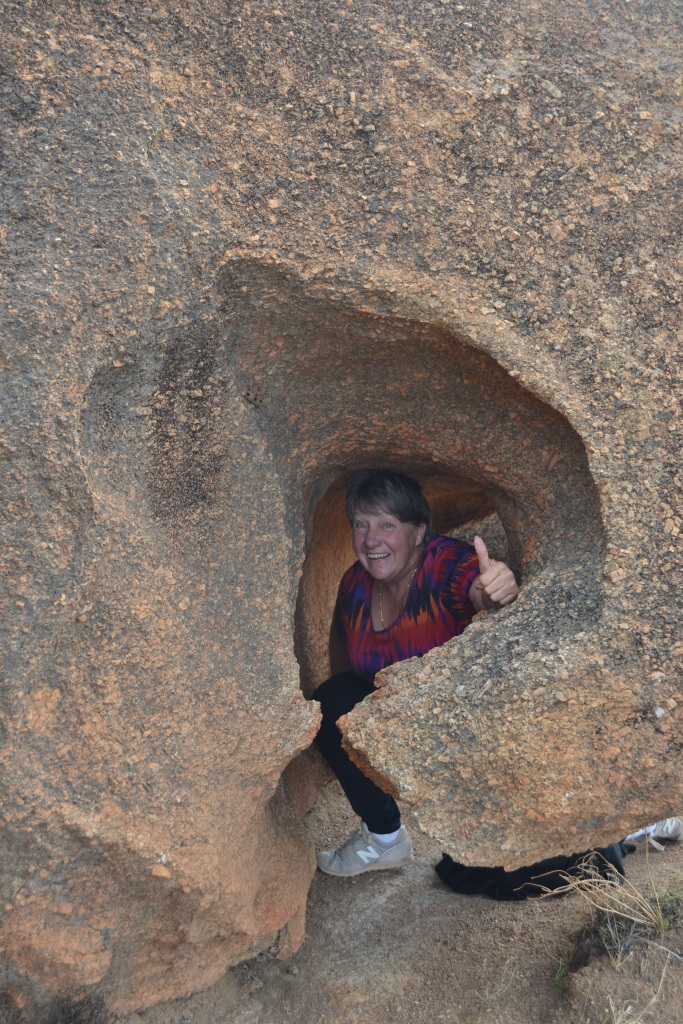
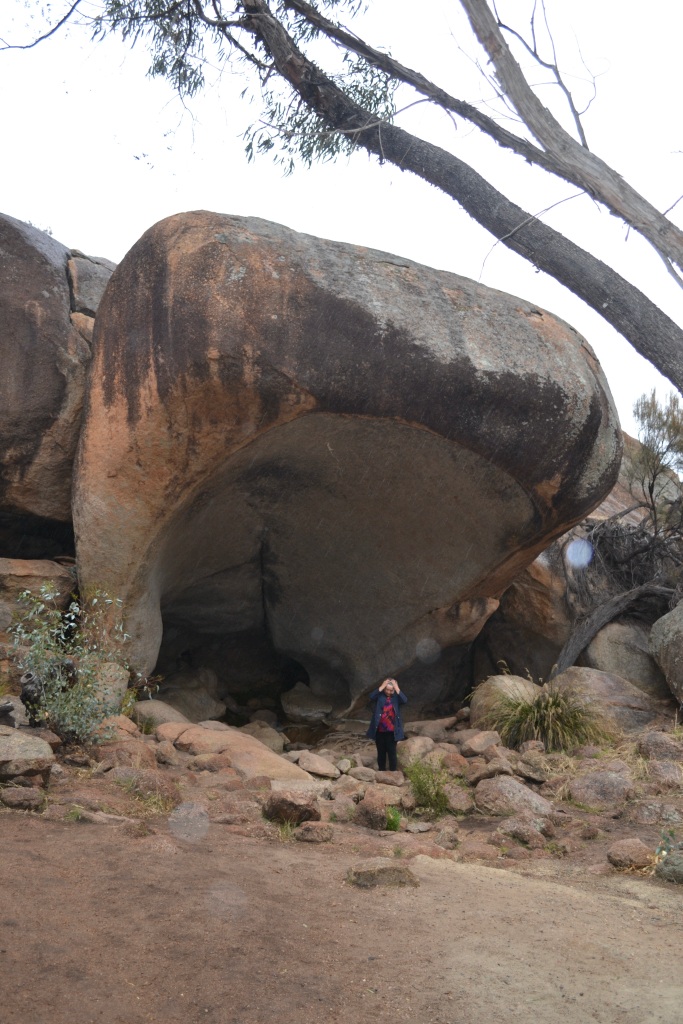
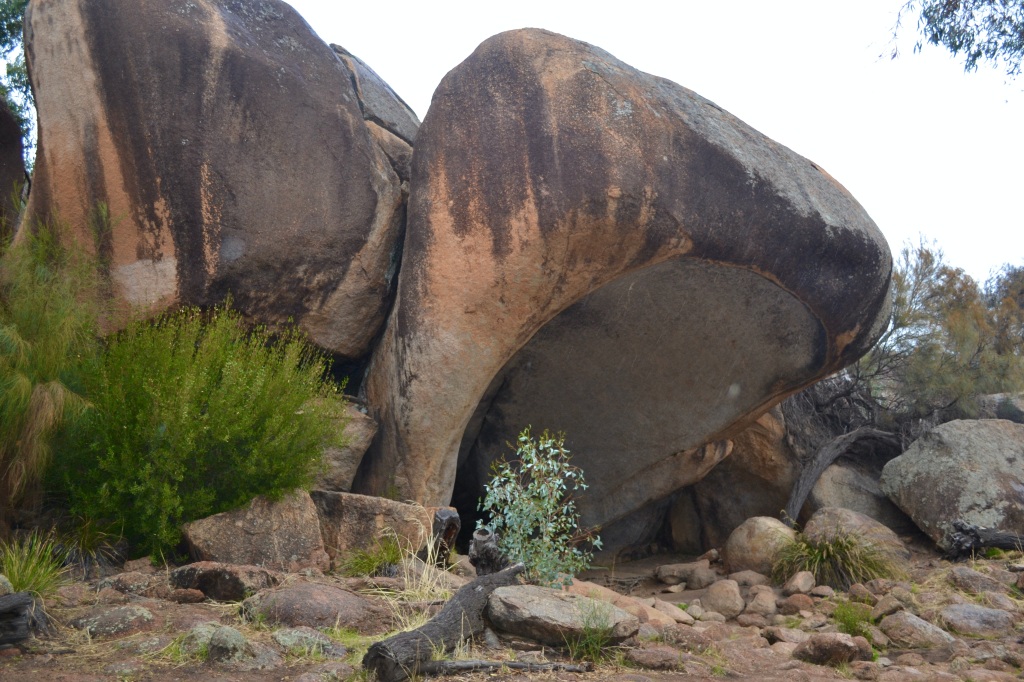
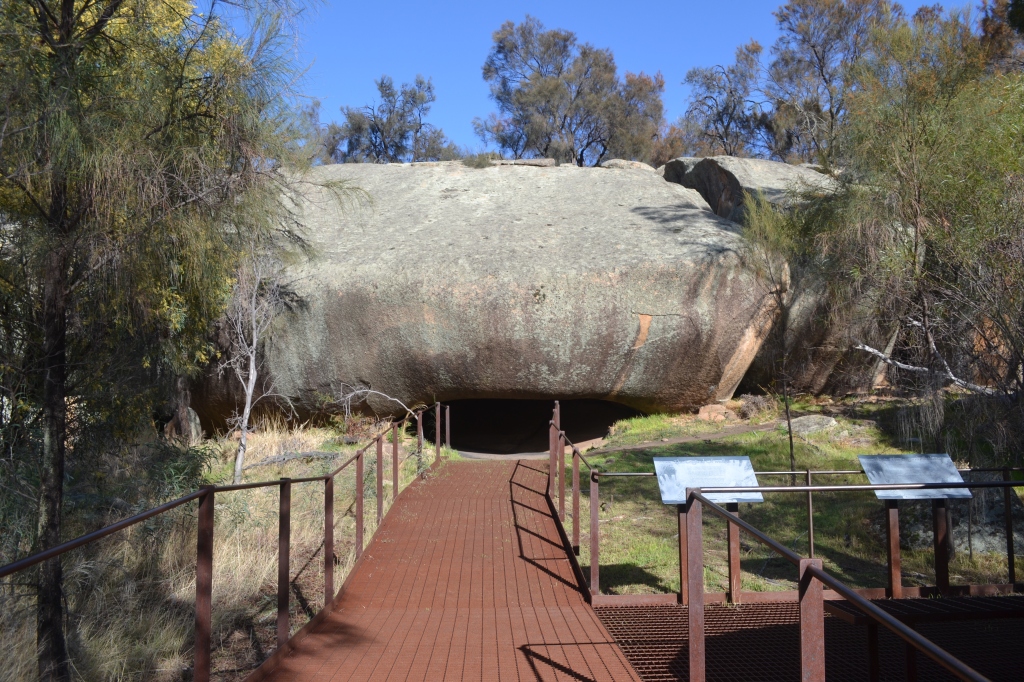


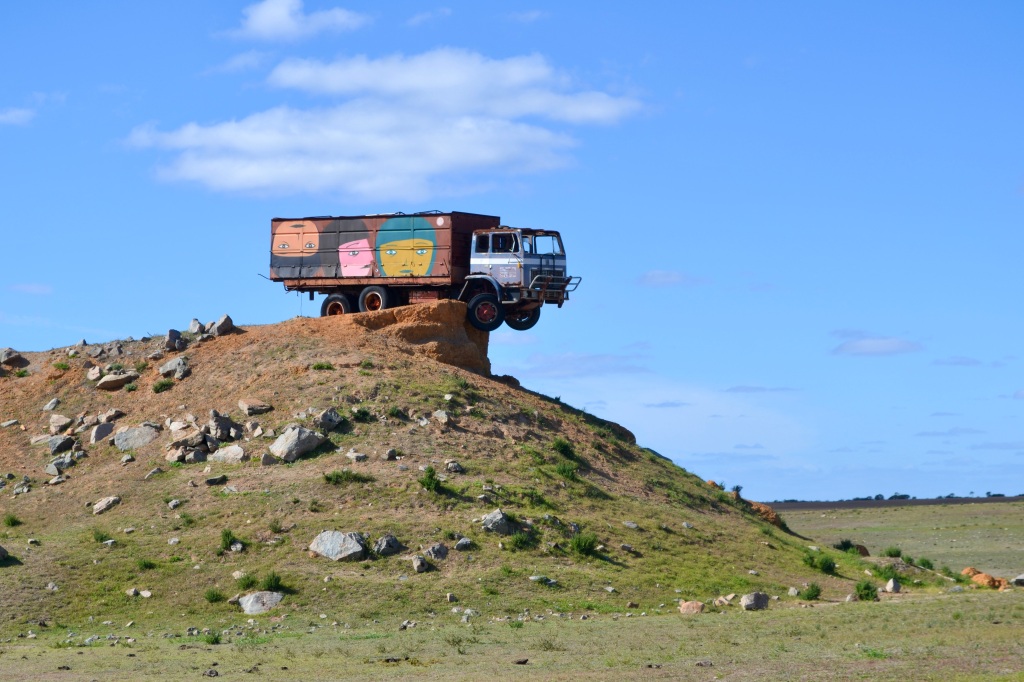

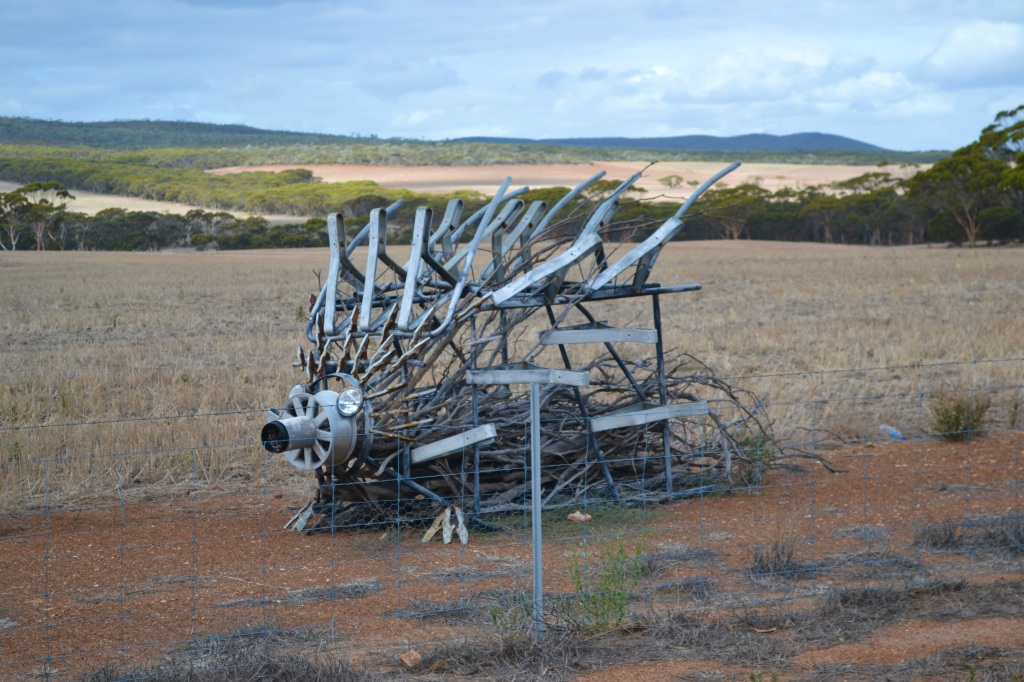
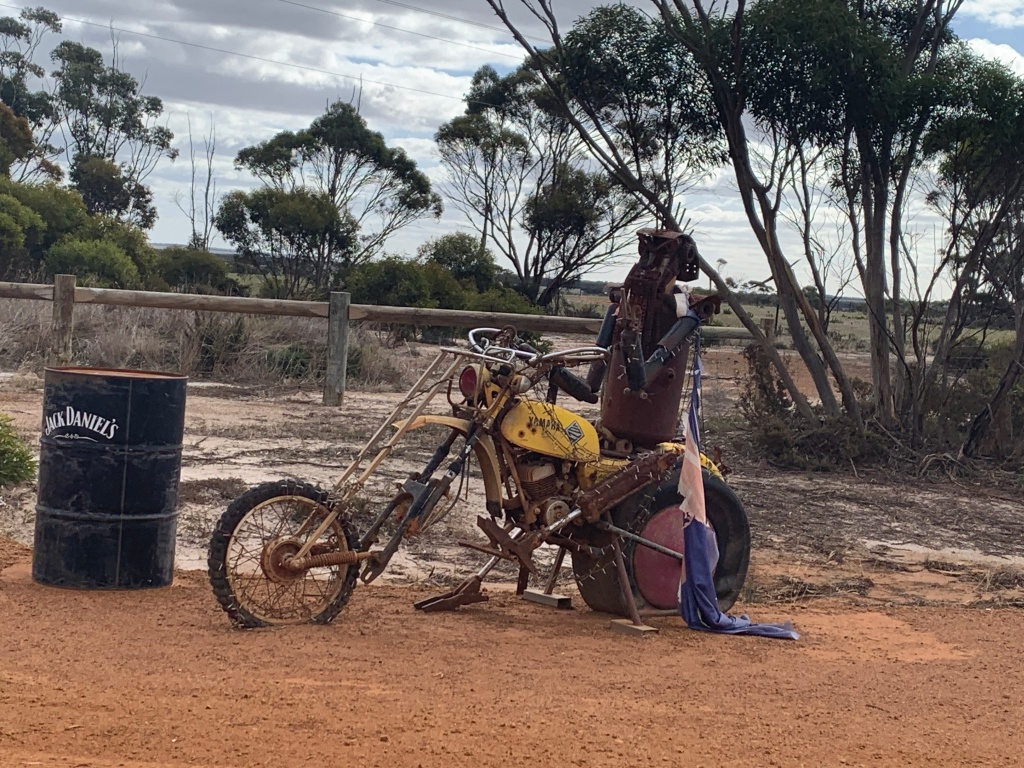
On the way, I had considerable trouble finding a caravan park with vacancies. At the last minute, we pulled into a caravan park in Esperance, which, luckily, had a site left. A light rain was starting, so we hurriedly unpacked. We had little food then, so we quickly drove into town. From everything I had read, I was expecting a substantially sized town, but what we saw that night seemed small and old.
As I had to complete some work, I left Ken to do the sightseeing the next day. Having not been impressed the night before, I did not think I was missing out on anything. It turns out I was mistaken. He was impressed with the town and spent a full touristy day. The following morning, he took me along the Ocean Drive to see the highlights. It was simply one of the most excellent views of beaches we had to date, and we had seen many coming down the coastline. The easy access to the views and the rocky islands dotting the ocean on nearly every turn in the road makes the town different from others. The bright turquoise beaches had paved walking trails along the side of the whole area. The many lookouts and accessible beaches were exceptional. Returning to town, it was not surprising to see many beautiful homes sitting on the high side of the road taking advantage of spectacular views over the ocean. I realised just how big the town was. There was also a beautifully maintained esplanade running the whole length of the town. The design beckoned holidaymakers to stroll and picnic along the water’s edge. Relaxing and appreciating the peaceful surroundings.
In addition to the stunning coastline, Ken visited Esperance Stonehenge, a full-size replica of the UK original. Constructed of 137 stones of Esperance Pink Granite locally quarried.
The structure boasts a magical experience as the circular shape amplifies sound, and the natural stone provides an energetic feel. I am not sure Ken felt that; however, he was amazed by the stone’s height and intricate set-up. He was impressed that it was built to align with the Summer Solstices in Esperance.
More Photos here
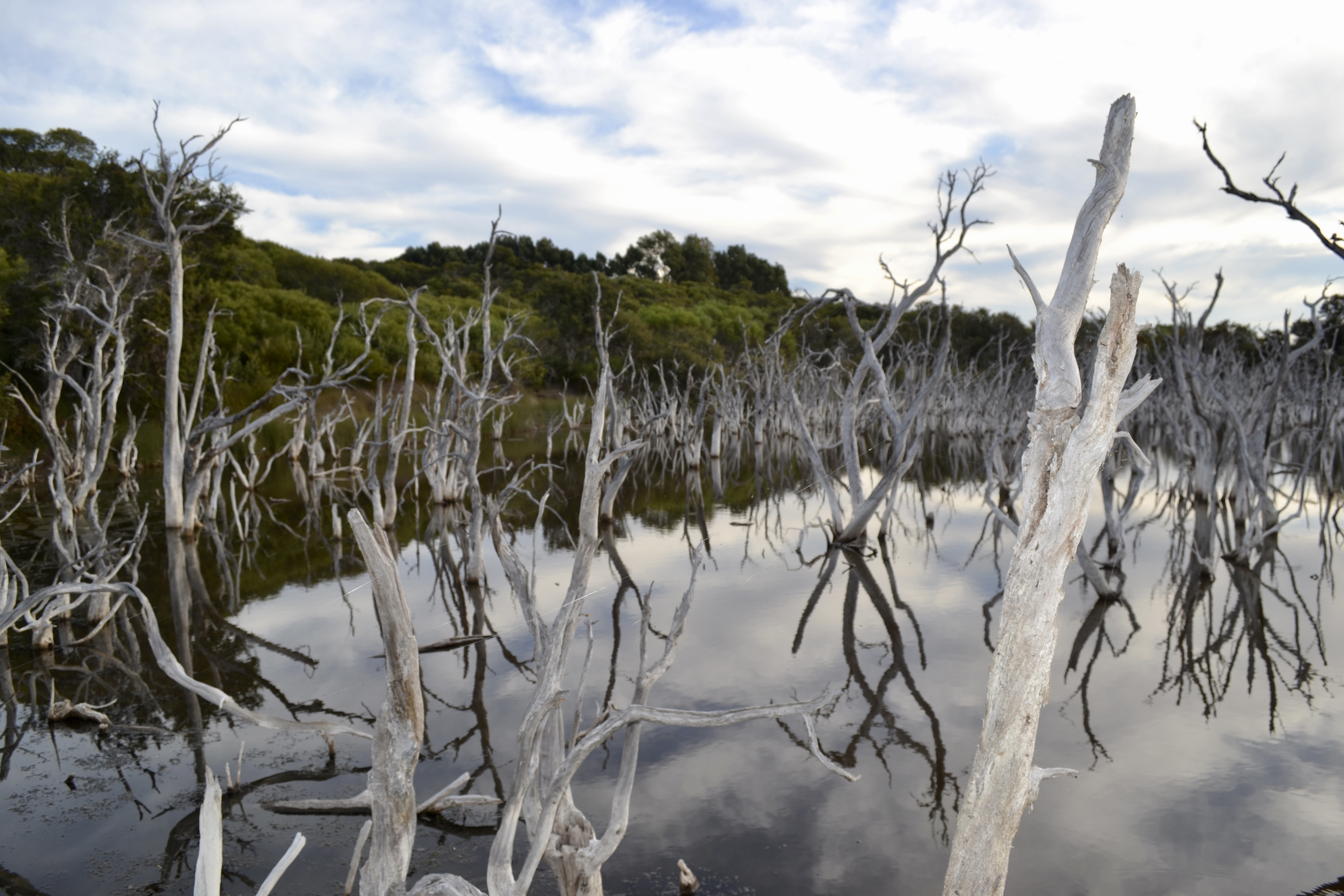
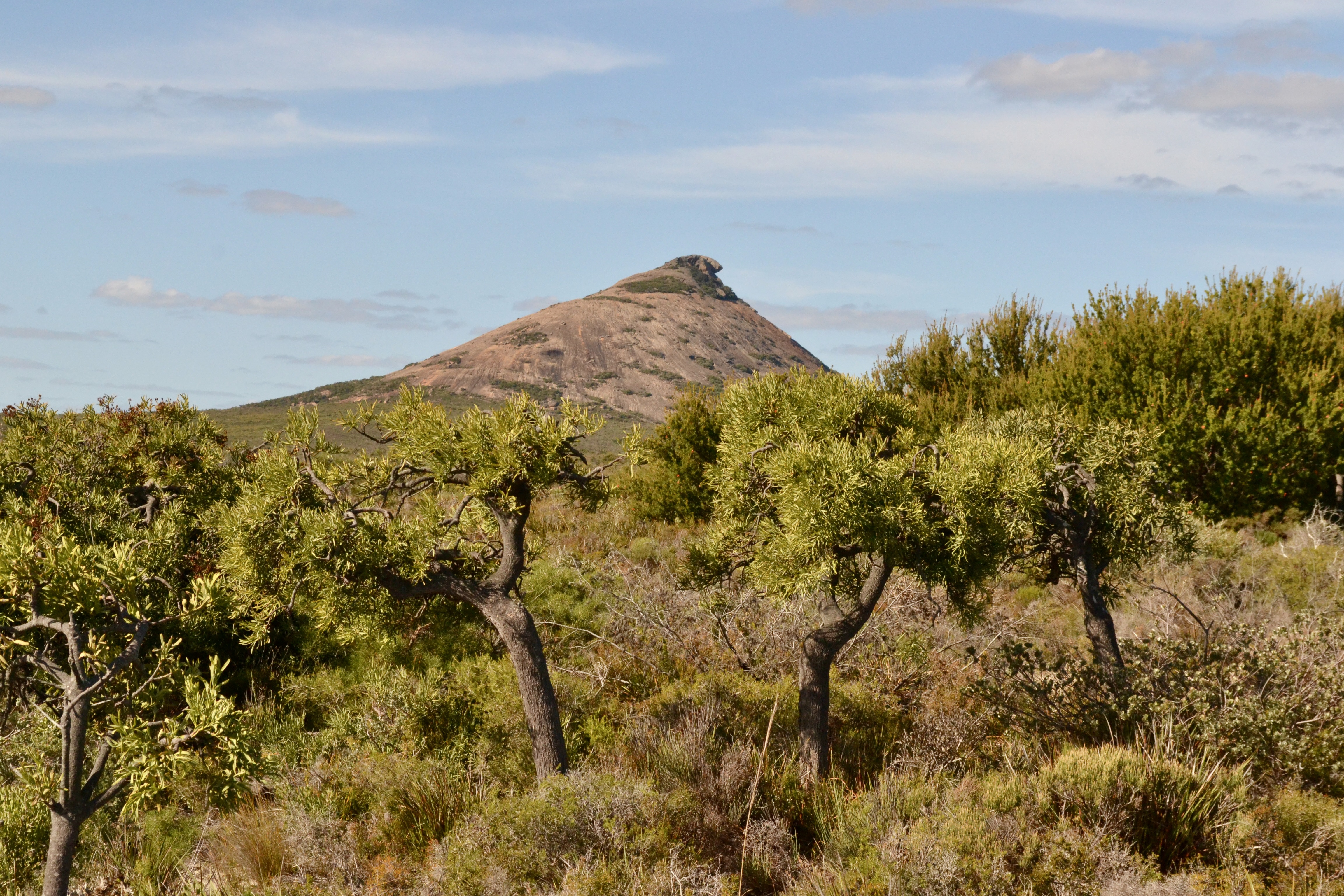
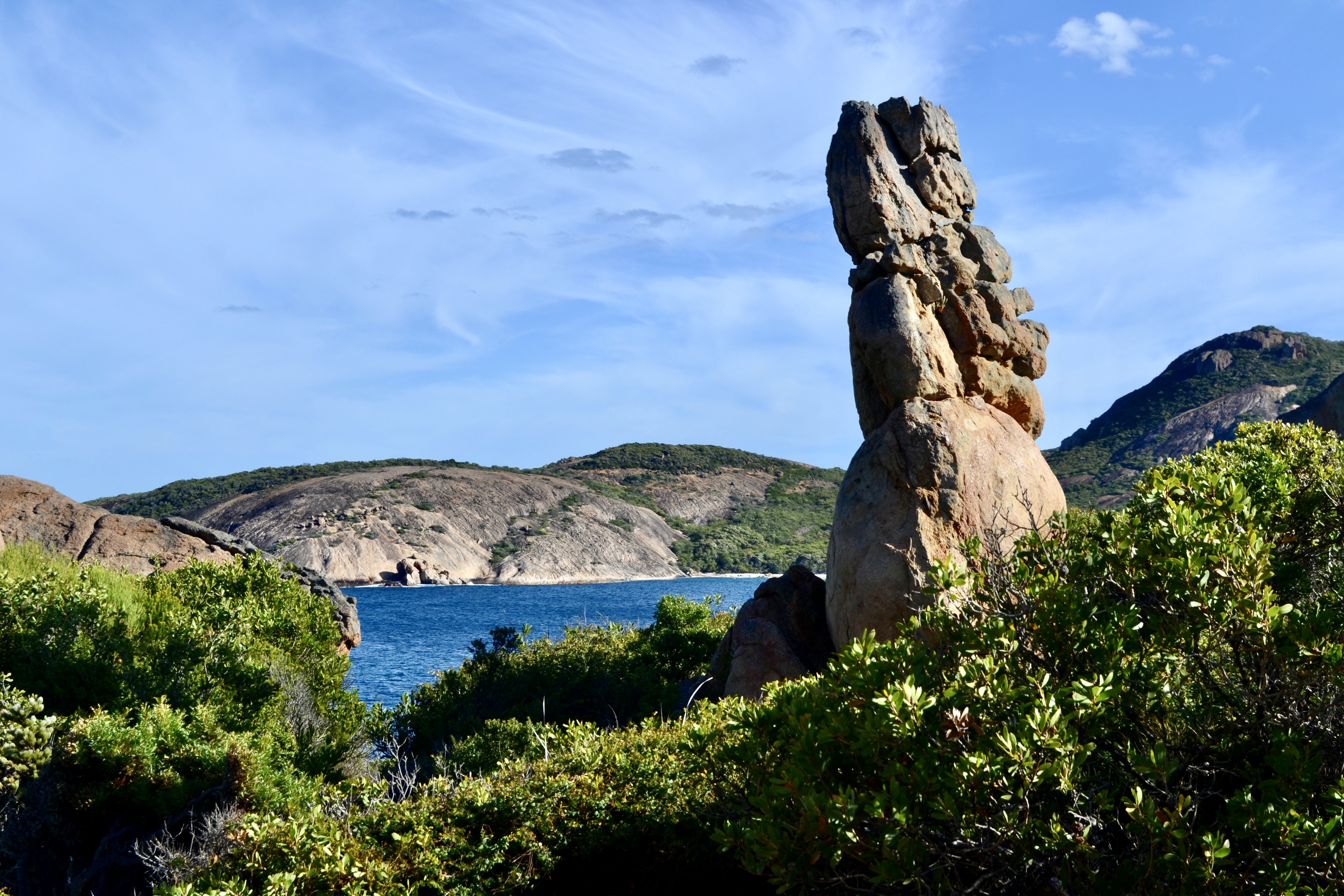
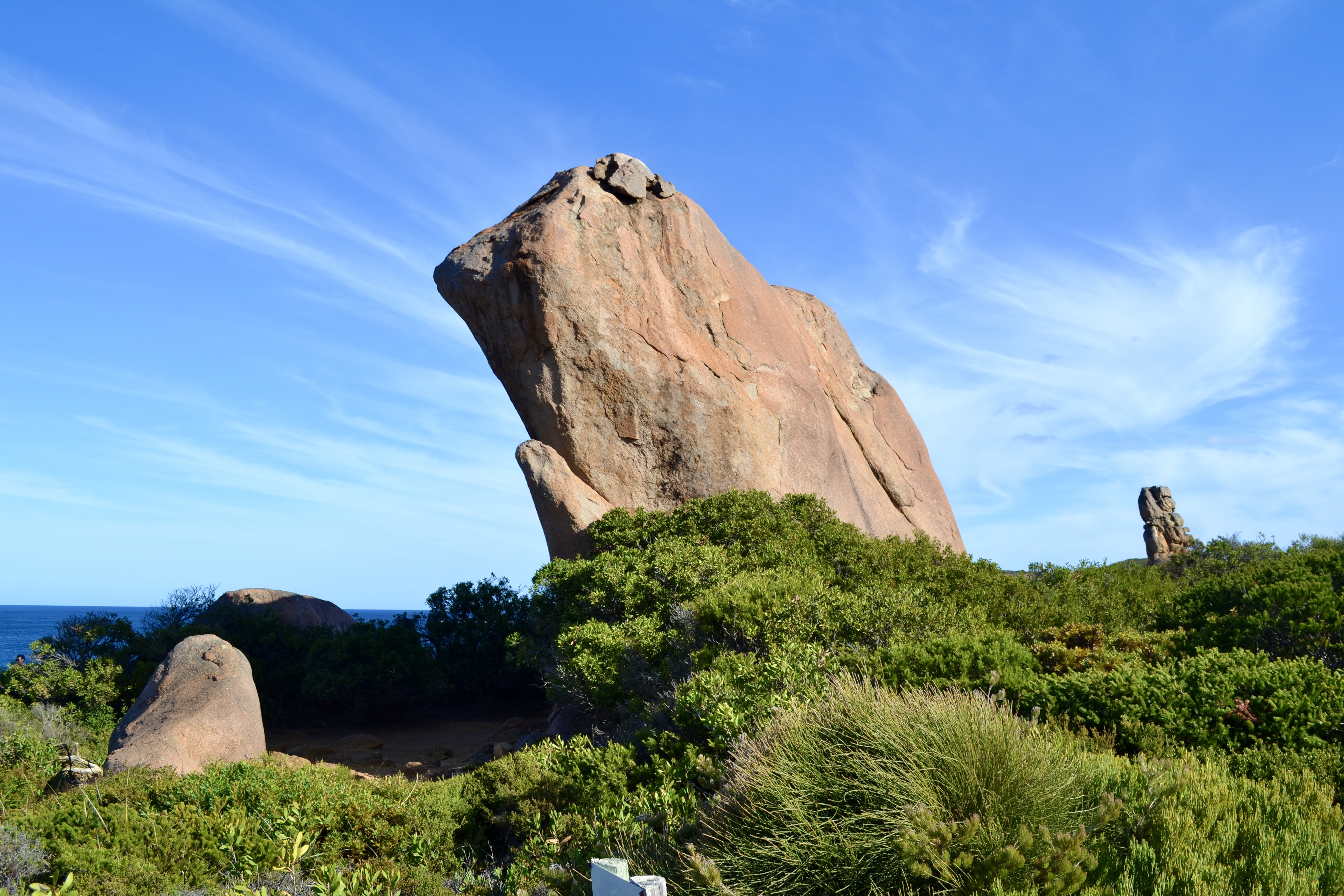
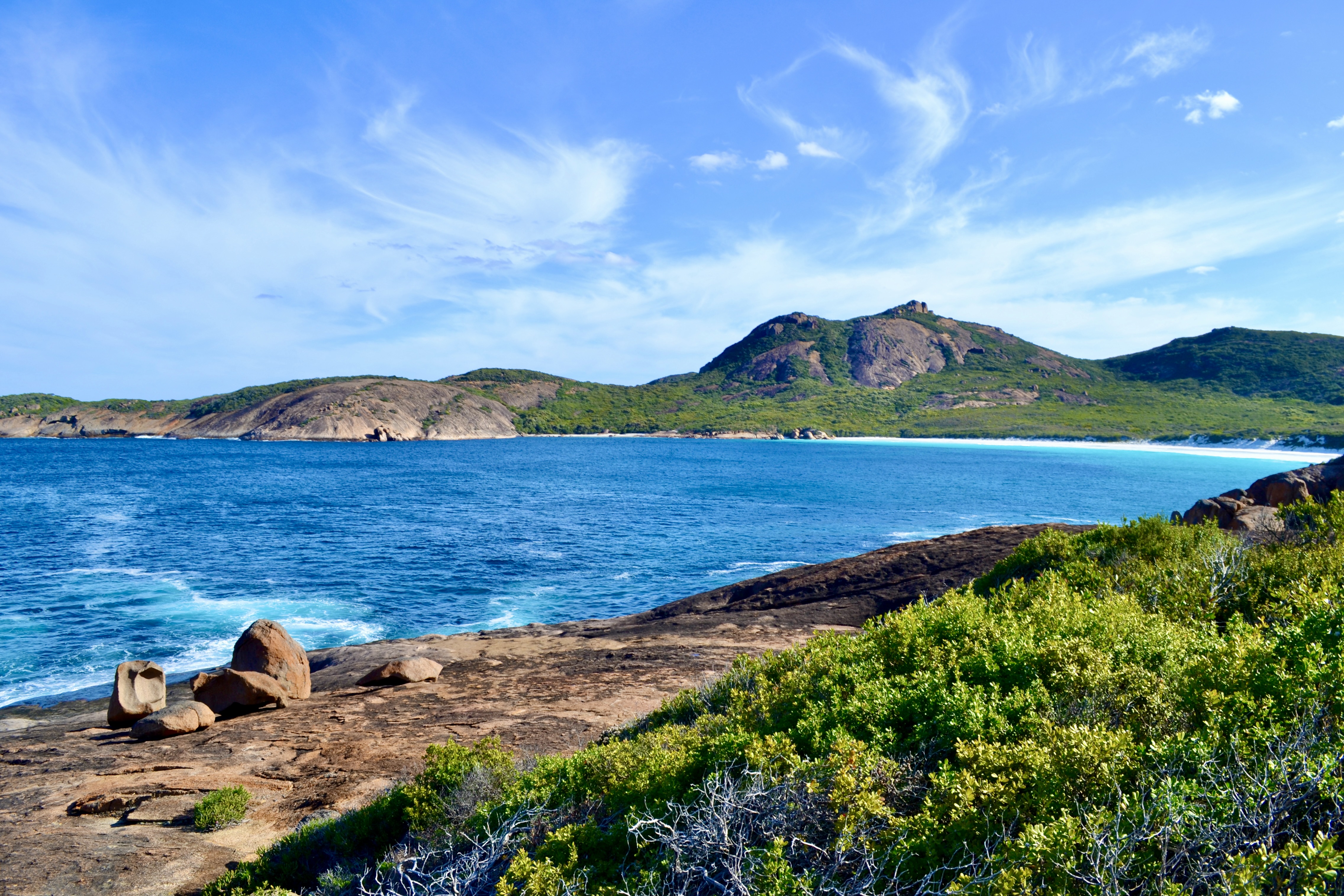
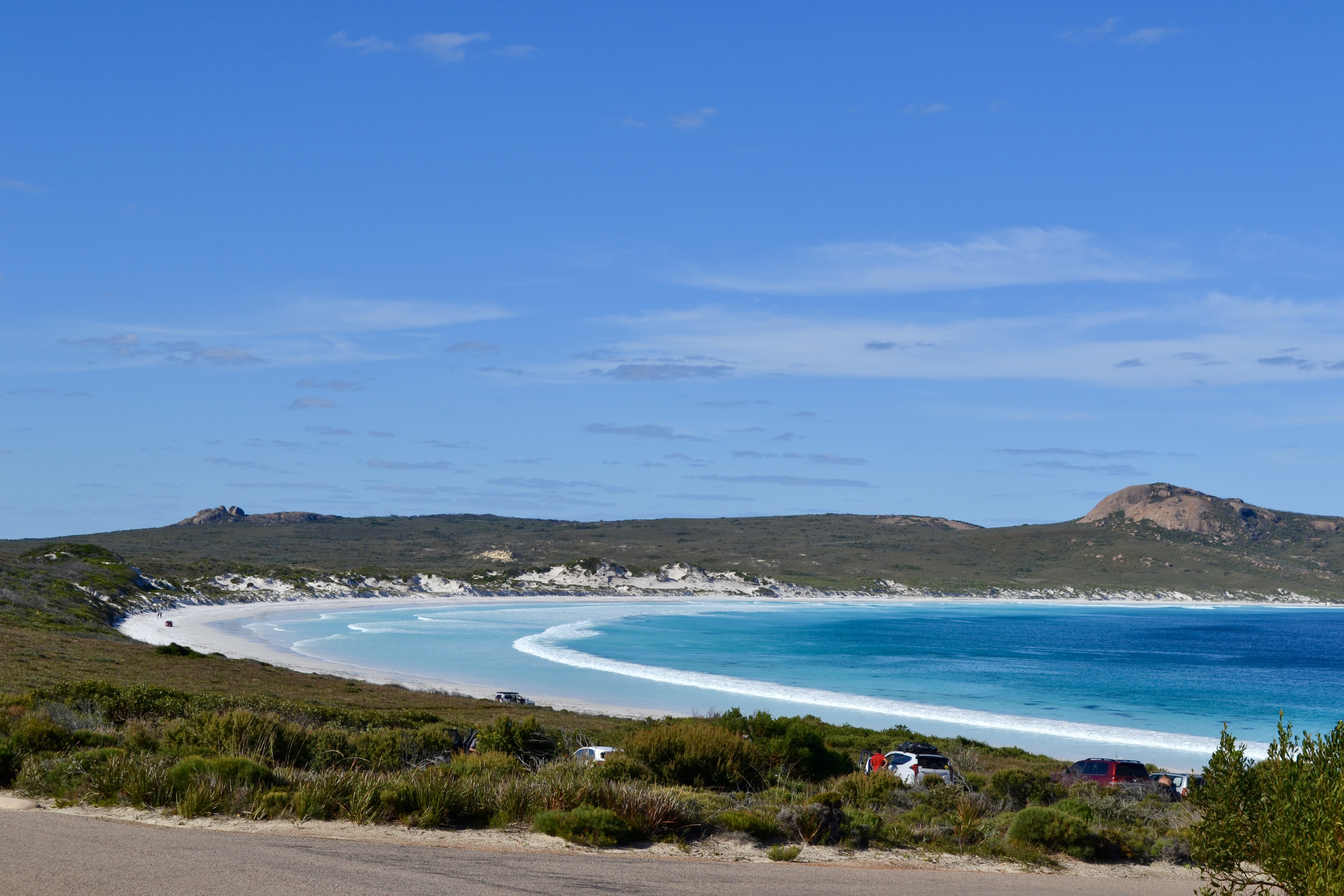
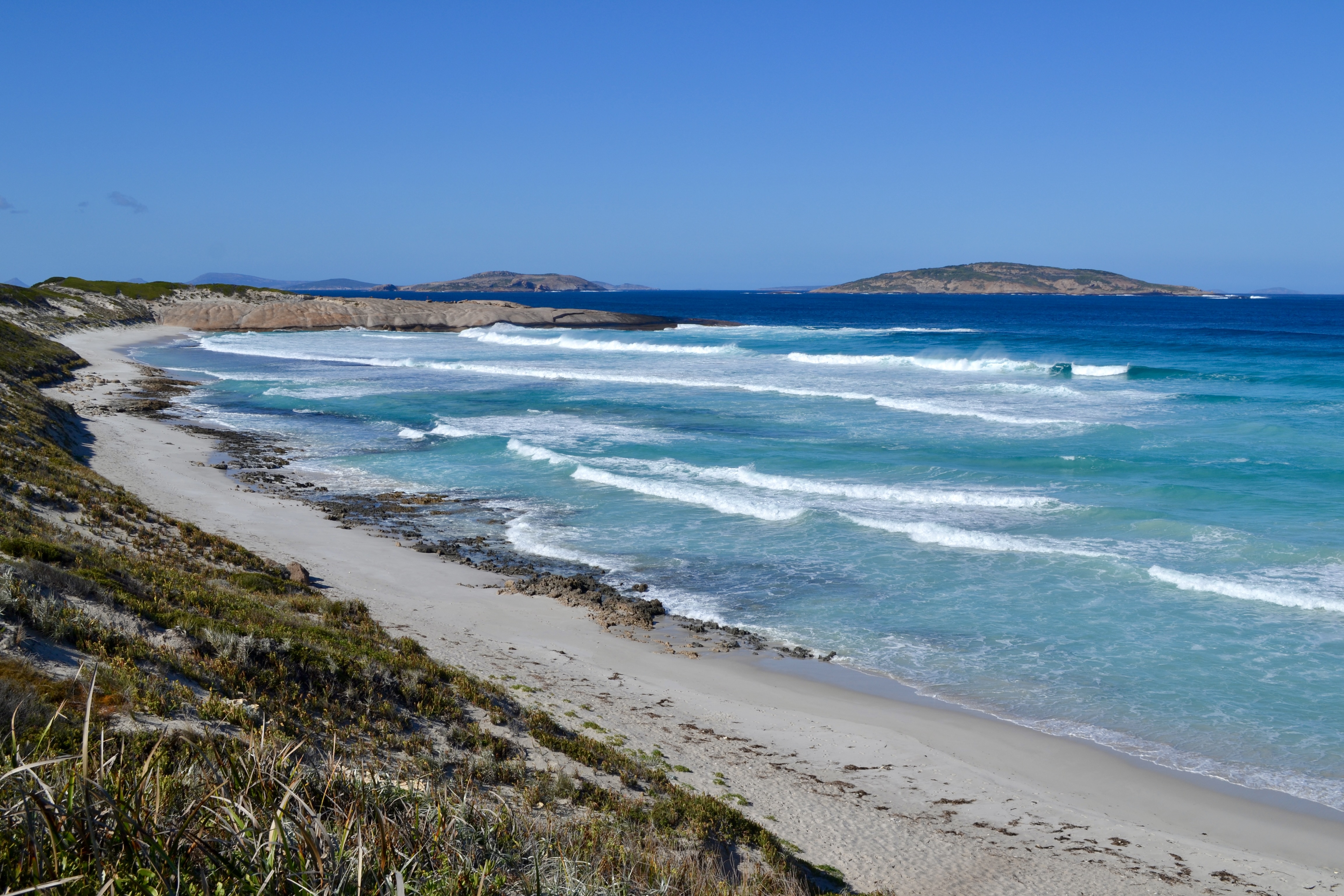


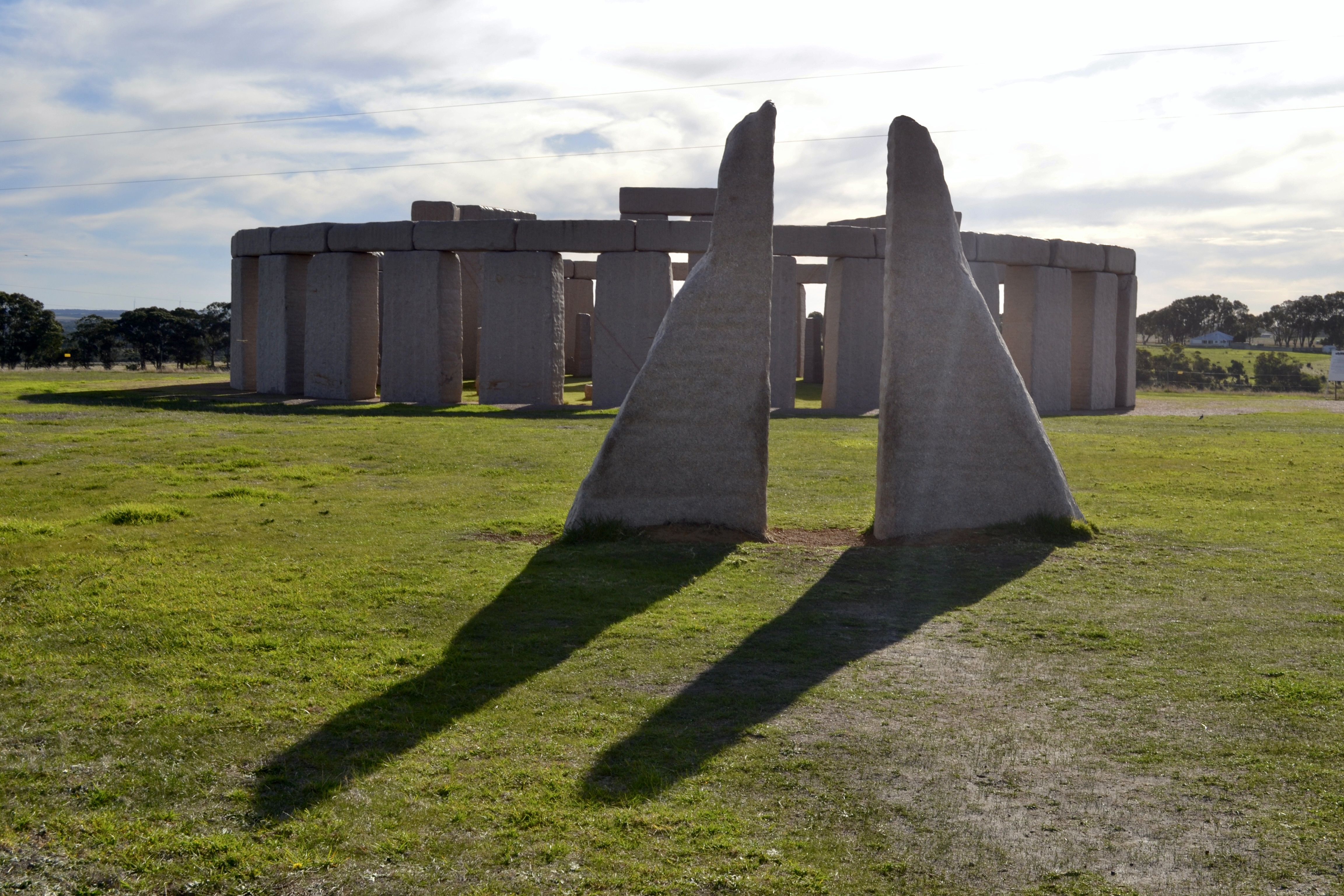
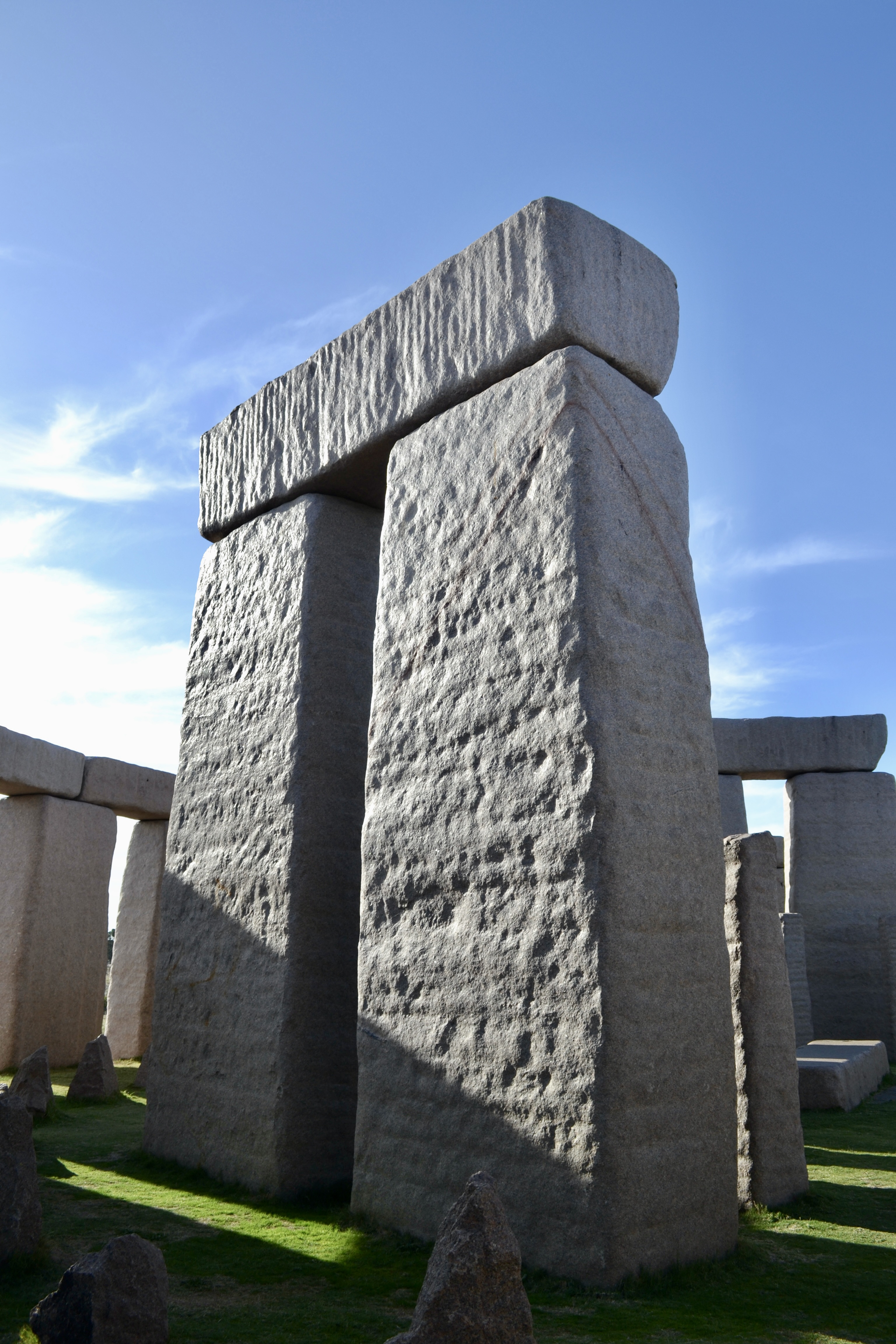
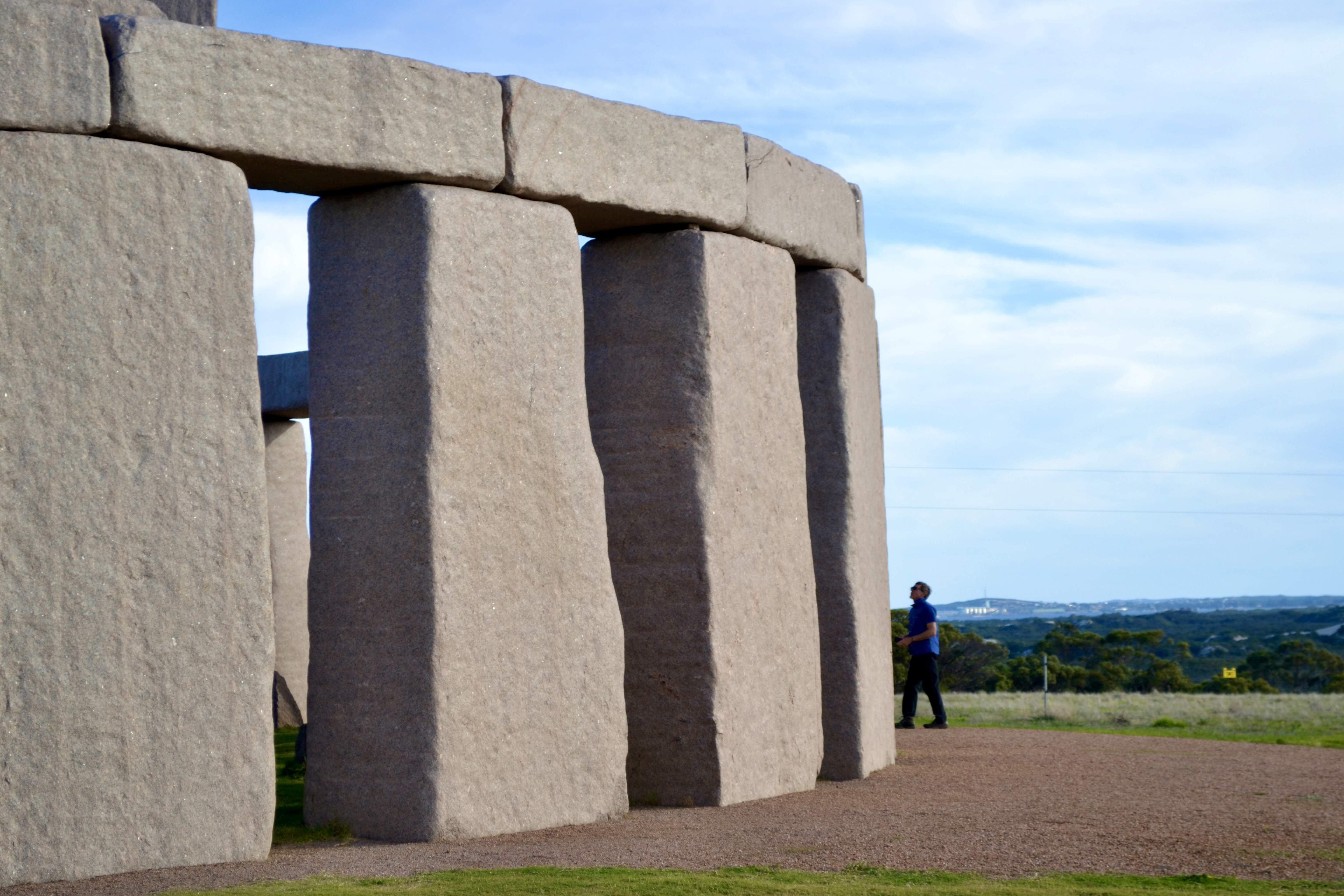
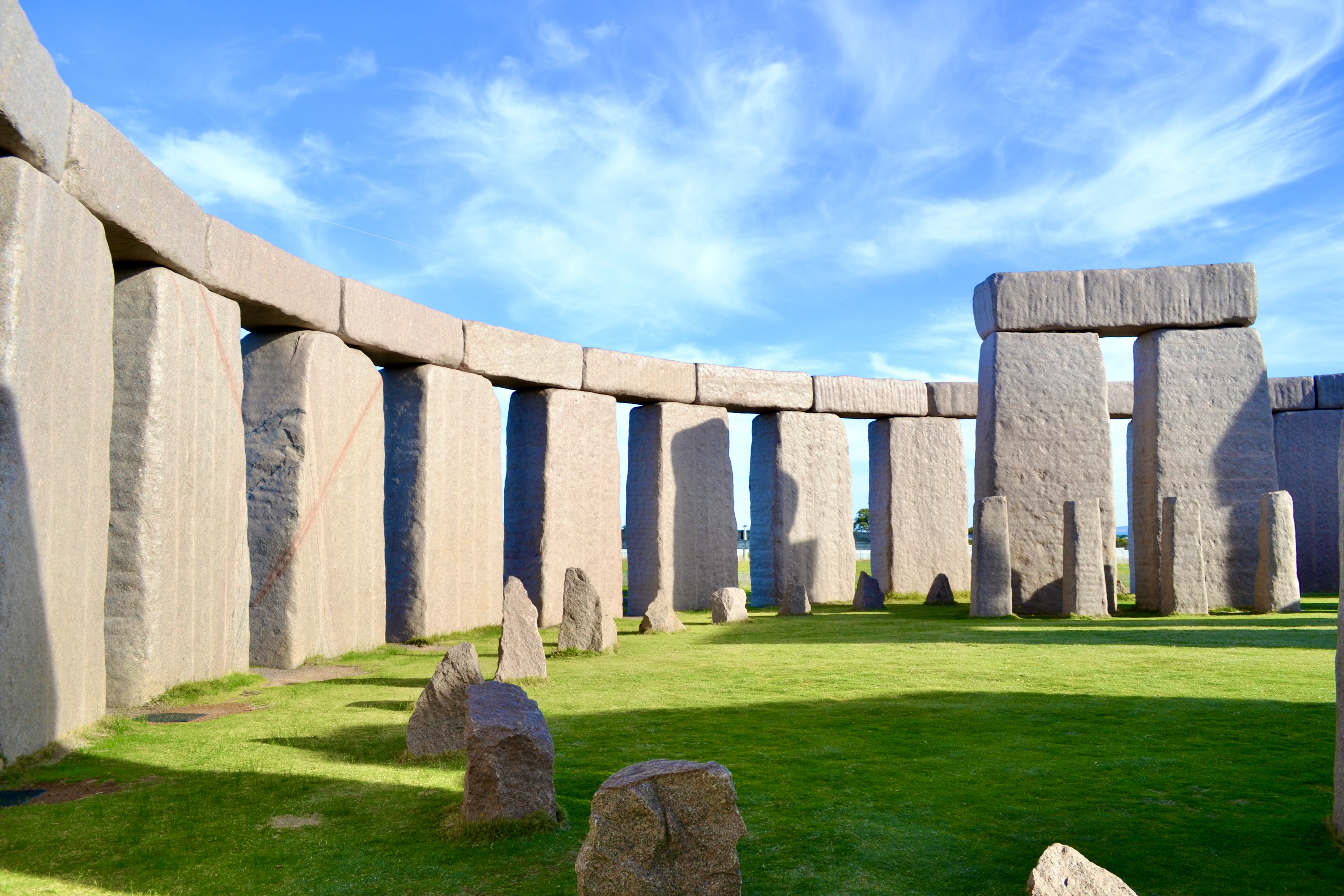
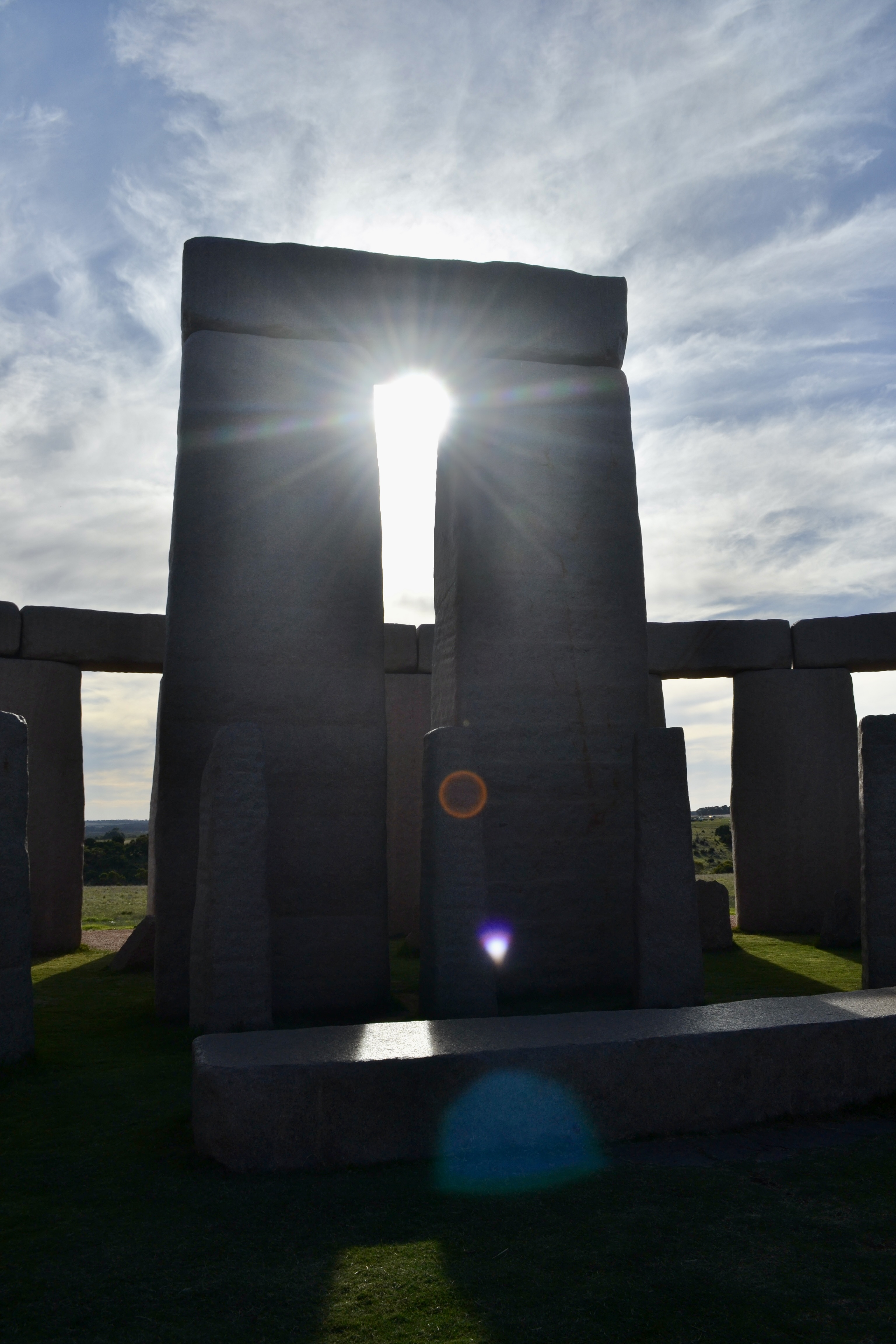
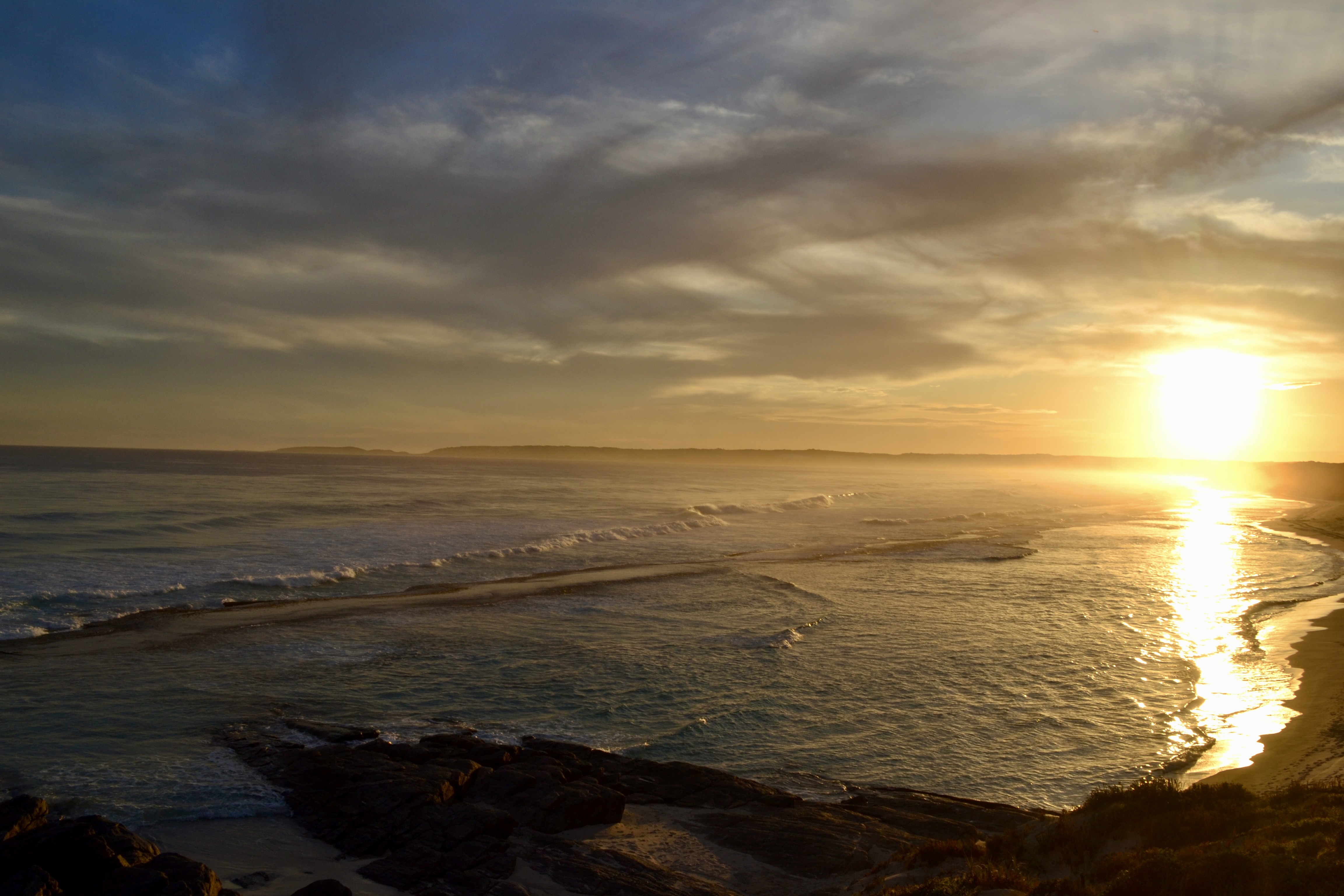
Alas, it was time to start the journey home. Heading up to Norseman was a pleasant but uneventful drive.
Norseman to Balladonia- We came across Newman’s Rocks while looking for a free camp. This camp has no facilities, but we had our trusty shovel on hand. It was a lovely area with plenty of space. We were able to find a spot a fair way back from the road. Walking to the nearby granite outcrop, there is a small water dam where the camels come to drink. The surrounding area and the footprint in the mud prove this is the case; however, we were not lucky enough to see them. The night air was cooling, and a pit fire was in order. We settled in front of the fire, and less than an hour later, we hurriedly moved the chairs inside. The rain was on and off all night, but no problem once we settled in the trailer. The night was quiet, with the light rain soothing to the ears.
Endeavouring to get to the Bunda Cliffs for our next free camp, we started early.
We should have made it to the cliffs but did not consider the time change. We pulled into a caravan park at Eucla. $30 a night and $1 for a 5-minute shower. Funny how our perception of time can be so wrong. I figured at least $4 for a shower but realised 5 minutes is ample time, so I only had to pay $1. It was an accessible campsite with a lovely sunset. A light rain joined us but did not hinder Ken’s ever-increasing ability to come up with various meals every night. By this stage, we were tired of unpacking and packing, and the colder nights and heavy dew every morning made it a little more complicated. Having said this, I must praise Ken for his consistency in handling the meals and the washing up every day. I do not love this part of camping, so he graciously relieved me of the task. I did not expect it to last for the whole trip, though.
A good night’s sleep and we were on the Nullarbor again. Passing through the Village Border into SA, we again hit the treeless plains. We both agreed that this was the most serene and peaceful part of the drive. There is nothing but the road, the sun, some great Beatles songs, and our idle chatter.
We had heard about a vehicle cemetery nearby, but the information was sketchy. We had a rough idea of where to head down the highway. As usual no reception and no local map, so we turned left onto a dirt road leading to an old homestead. The road was tragic for an AWD vehicle. We carried on until we had to turn left onto another equally tragic road and decided it was way too risky if we were to break down. A long walk back to the highway would have been our only option. Lowering the tyres made for a slightly quicker return to the highway. While mastering the rocky road, Ken remembered another turn earlier on the highway, which was a named road that was possibly the correct turn-off. Time was hindering us, but what the heck? We decided to go back. A few kilometres along, we came to a more promising turn. Another gravel road but in much better condition, so we took off and were rewarded with our desired destination, the Koonalda Homestead near the Old Eyre Highway. Without the back story, we assume this was a pit stop years ago before the new Eyre Highway was constructed.
The homestead is well preserved as its last occupants were as recent as 1988. See the photo below for more detail. The inside of the house is old and disused, but remnants of life are evident. The old lino on the floors, what I believed was an early Kelvinator fridge, some iron cots and other pieces of interest scattered throughout. The outside fences are still standing, and the shade of surrounding trees gives a pleasant outlook. As the old highway was abandoned, so were the old vehicles along the route.
Rather than leaving them strewn around, someone in their wisdom bought them here to rest with their fellow road mates. About 50 or so old broken-down cars, trucks, and other junk exist. Often still distinguishable but passed their use by date. We were both happy to have made an effort to see this site. It helped put all the old comments about the difficulties of travelling the Nullarbor into perspective. Indeed, the road travelled today is a vast improvement.
We drove on with the intention of flying the drone over the Bunda Cliffs and then moving on quickly to Ceduna. Happily travelling along, we remembered several pull-offs; a couple were formal lookouts and a couple of dirt road entries to the cliffs. We passed a couple and thought the next would be our stop. Amazingly we realised we were heading away from the cliff’s edge and suddenly questioned whether we had missed the turn. We discussed turning back and decided against it. We were maybe 30 km from the Nullarbor roadhouse and needed to get petrol. Disappointed but resigned, we got our petrol, glanced at the time, and noted we would be lucky to reach Ceduna that night. Having this realisation, we looked for campgrounds on offer. As it turned out, there were some with bad reviews and some a fair way ahead. Another 10-minute discussion and our hearts overtook our heads. The car obediently turned back and headed for the cliffs. I was happy as I knew Ken would have regretted never having the chance again to video them.
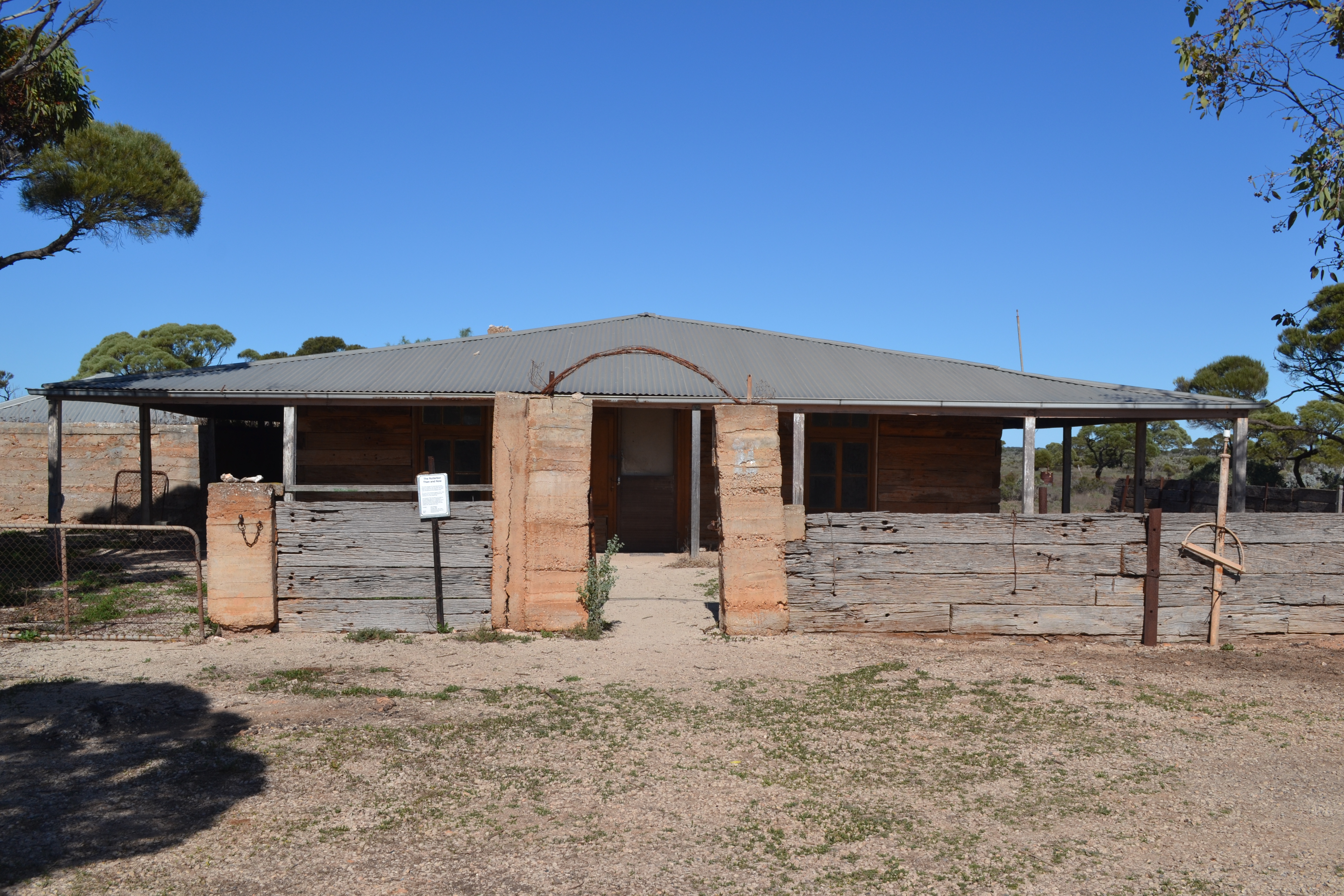



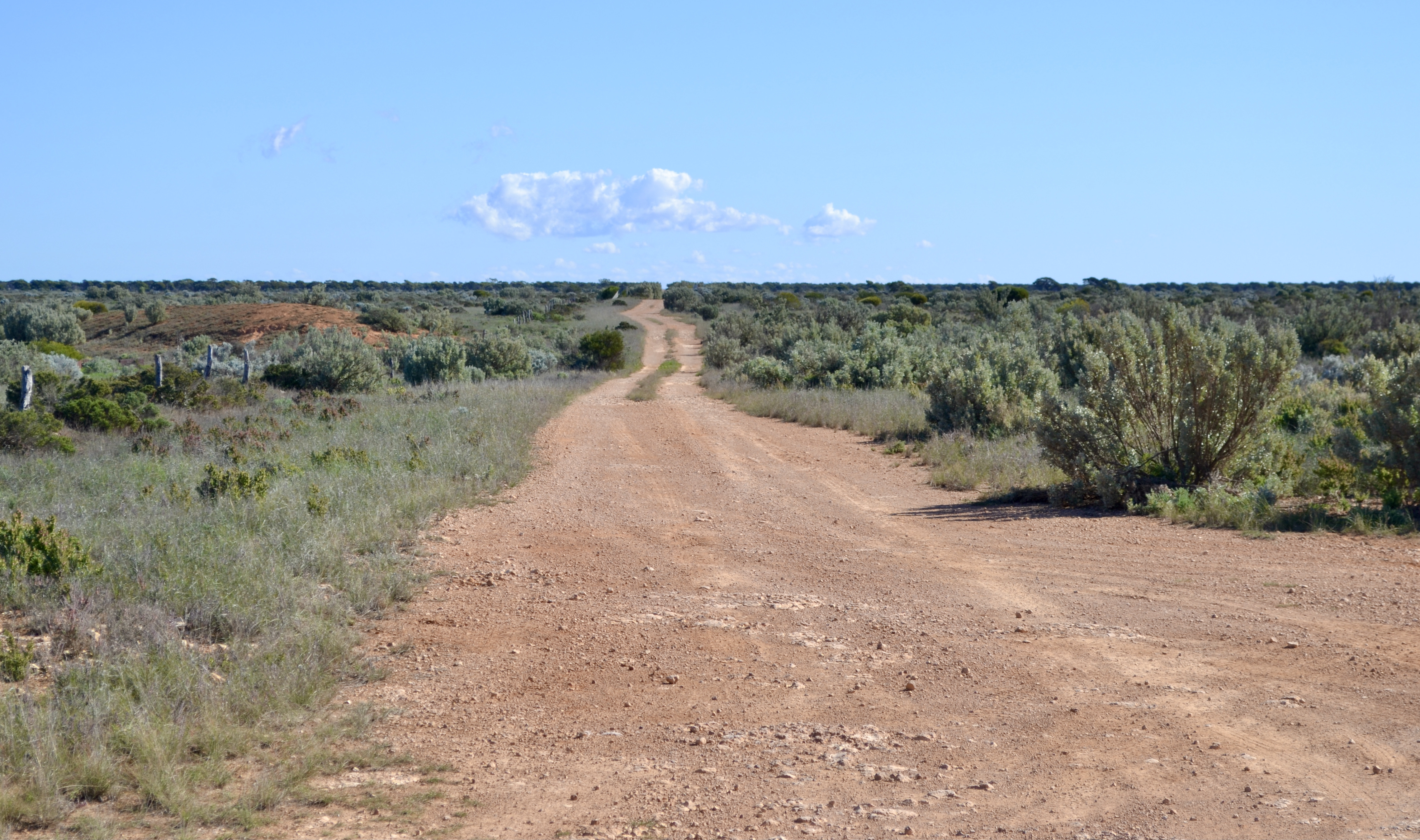
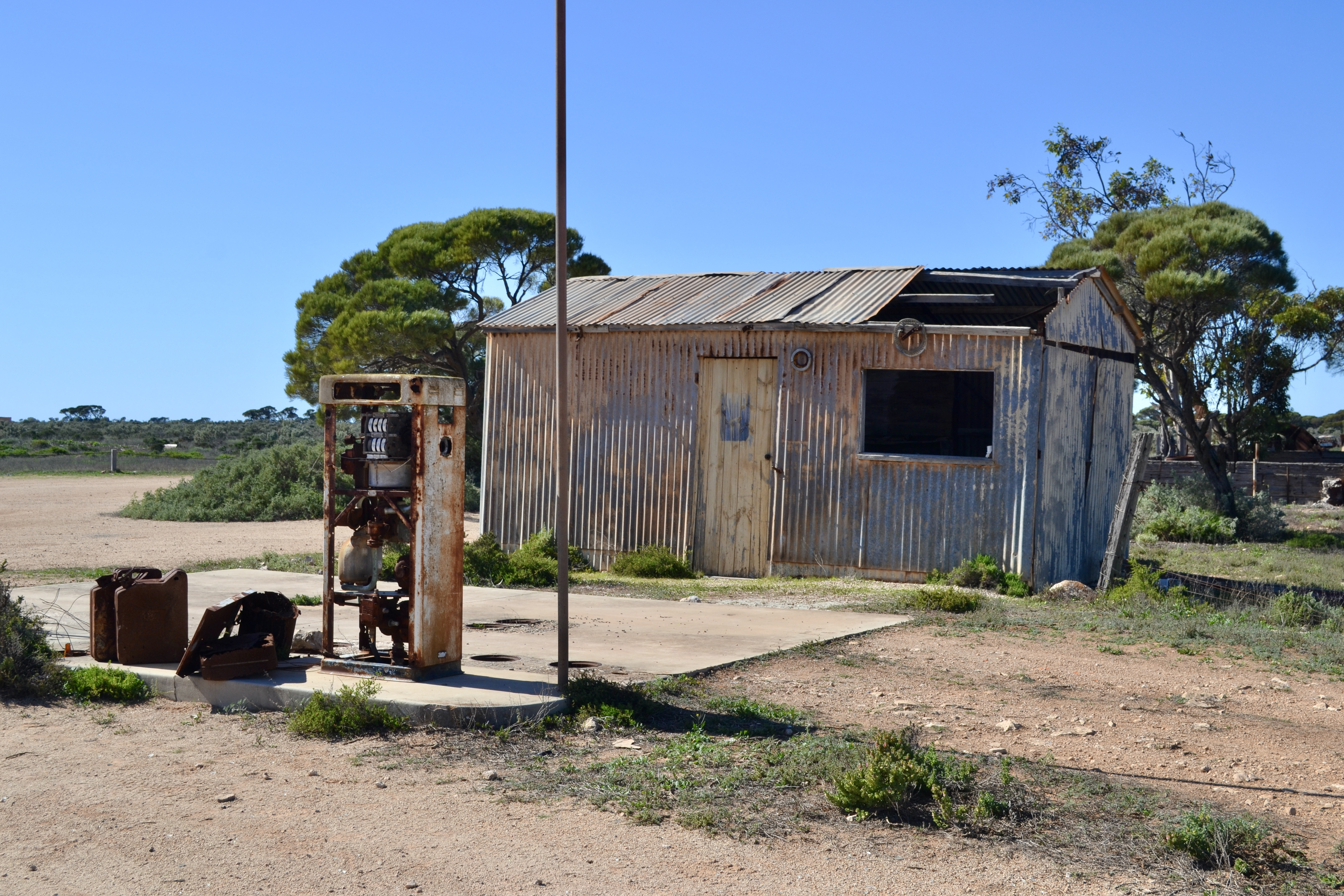
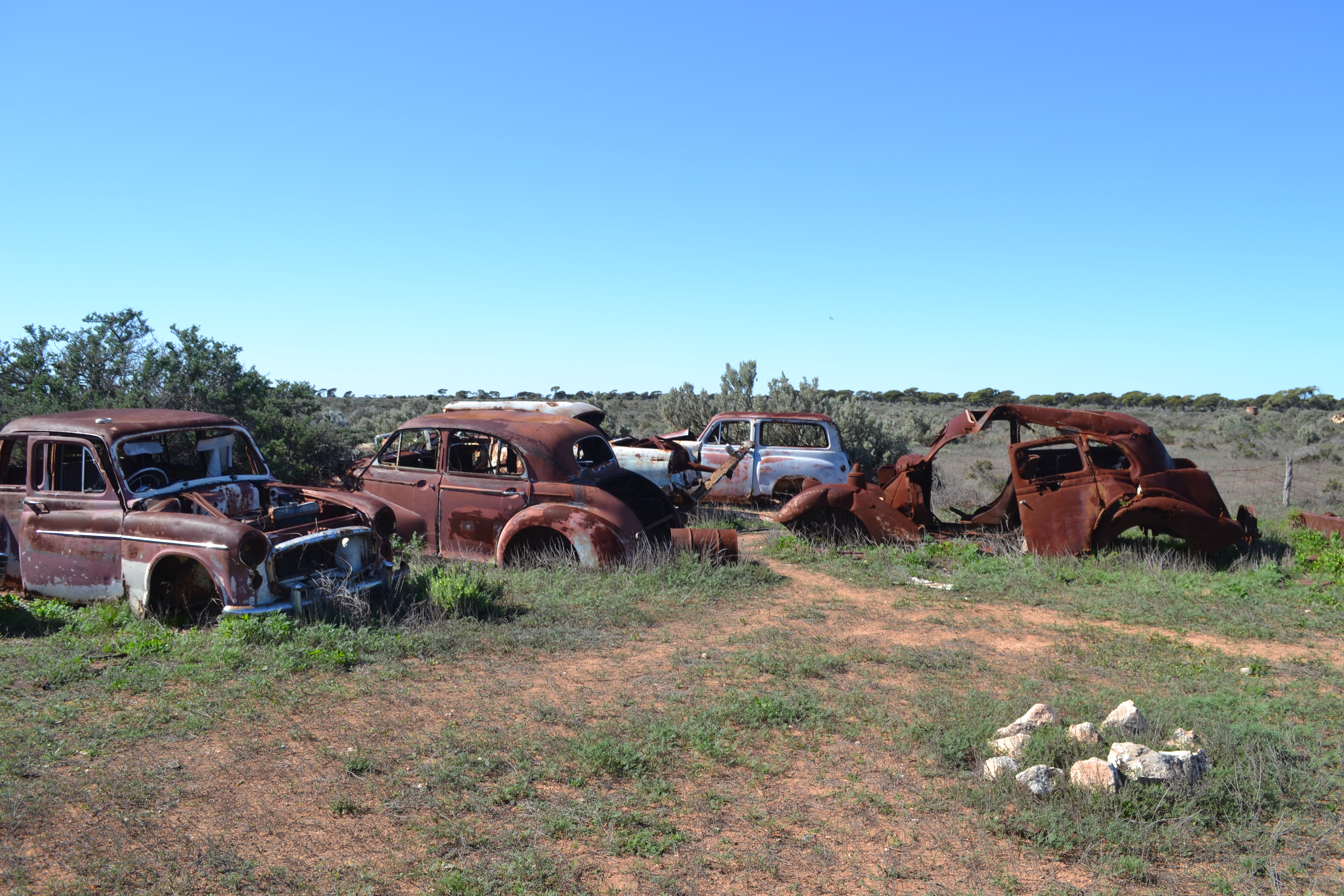
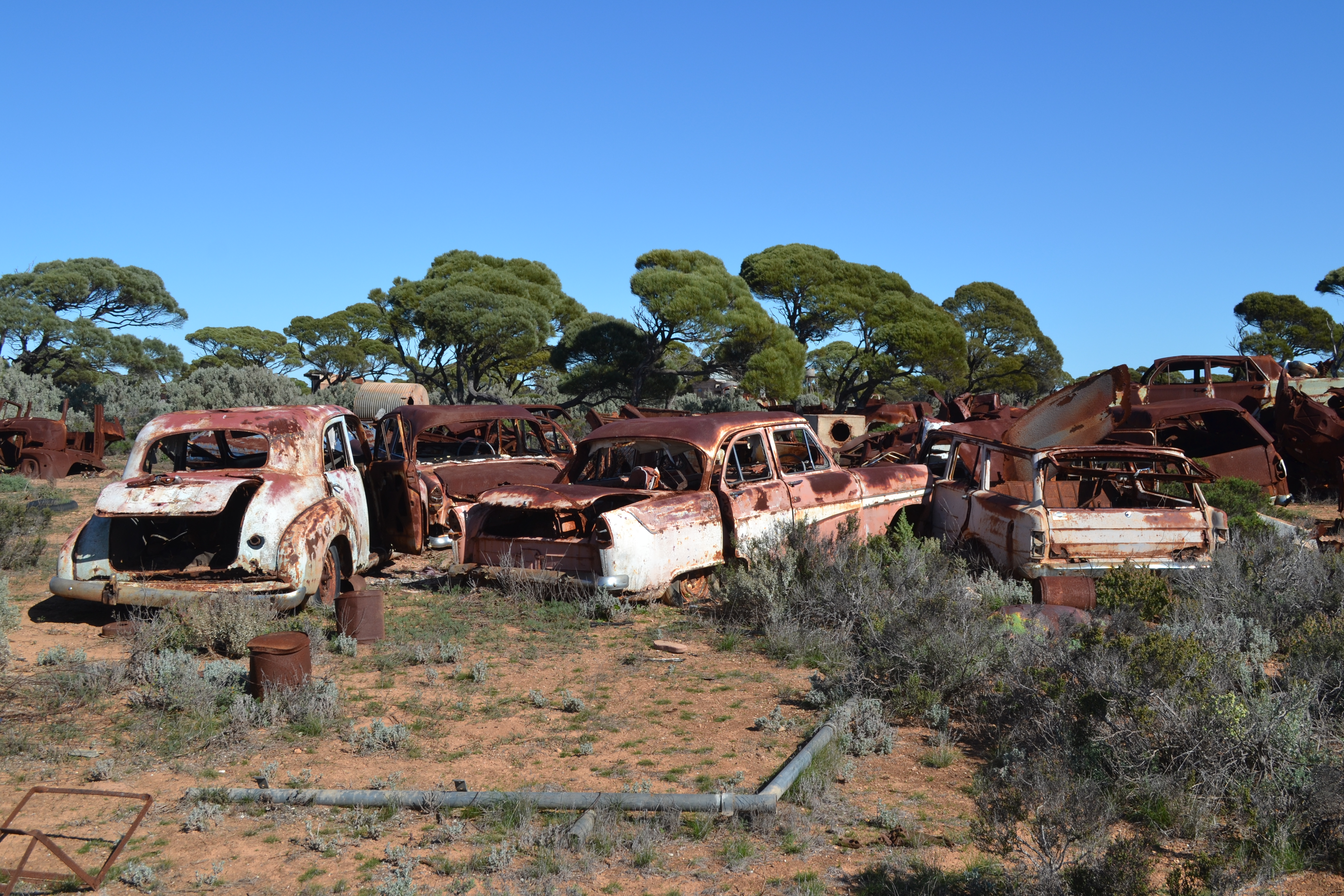
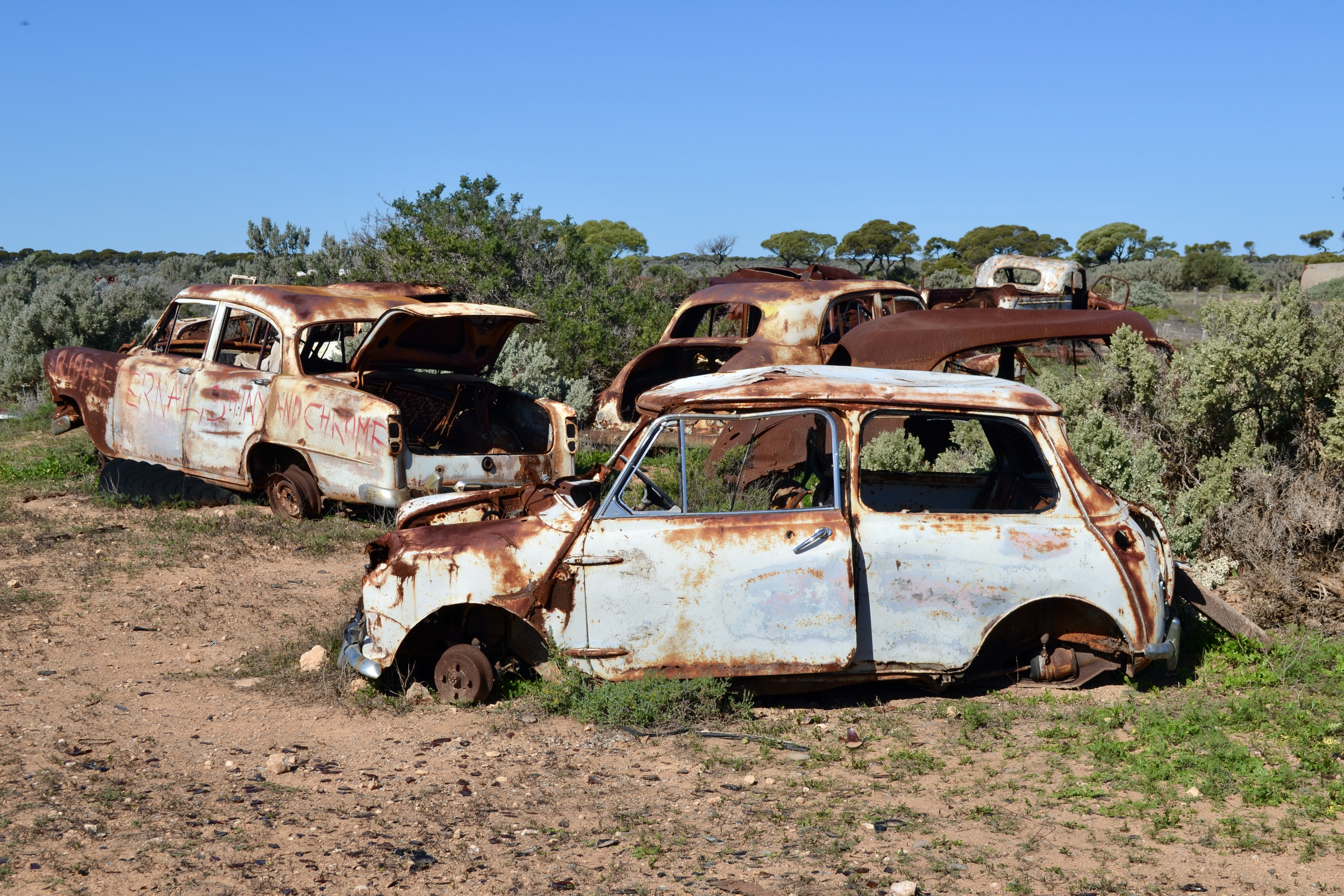
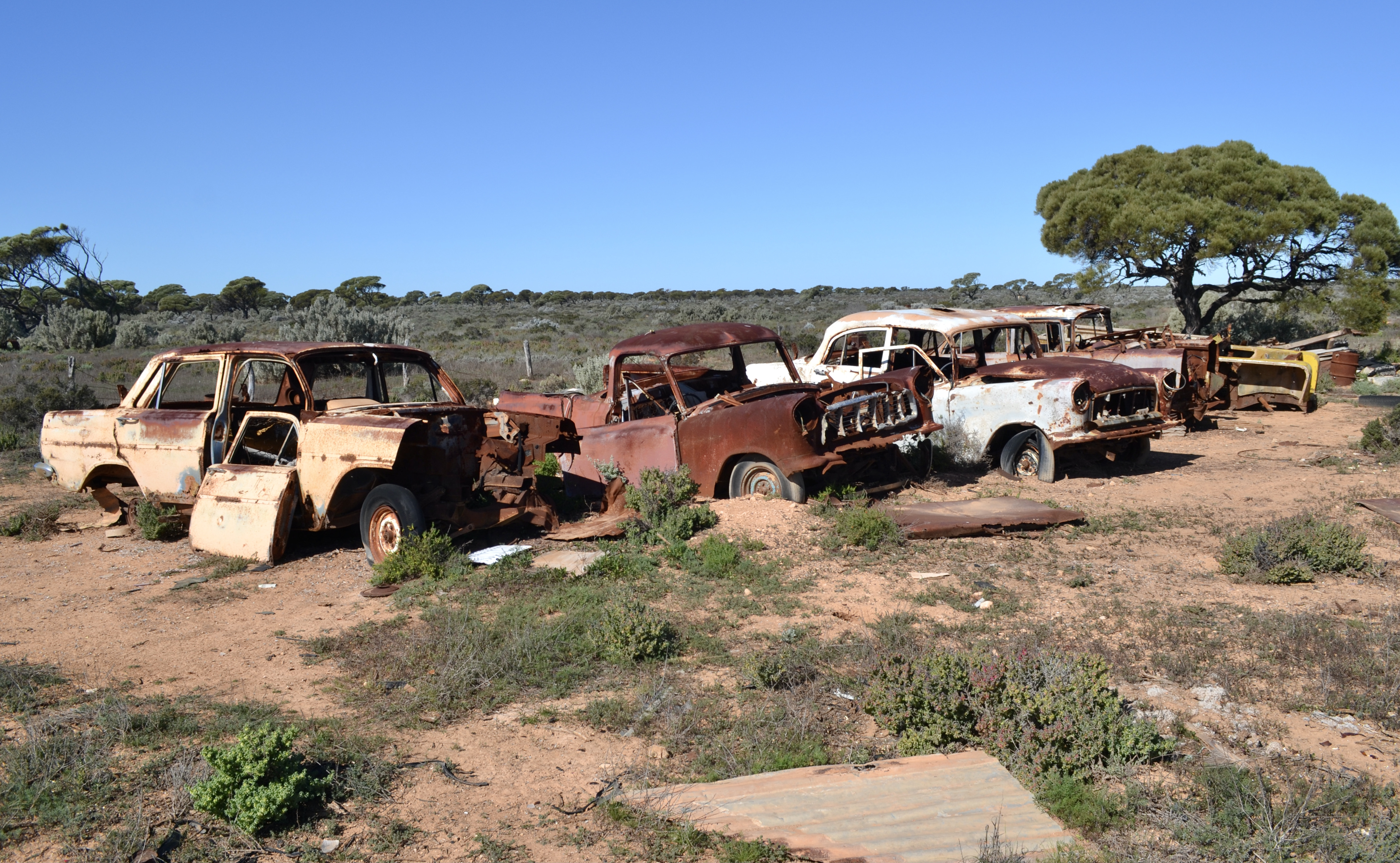
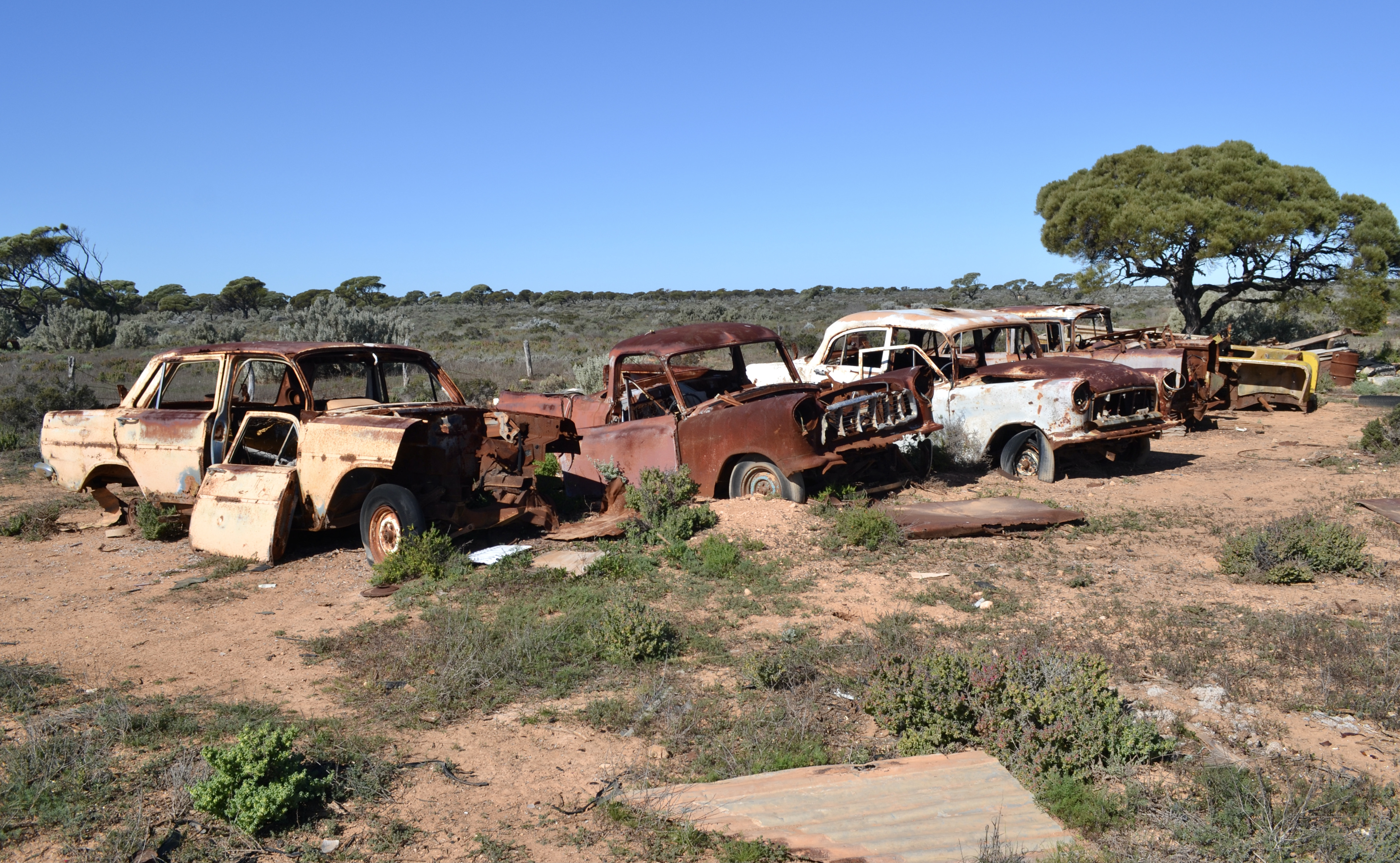
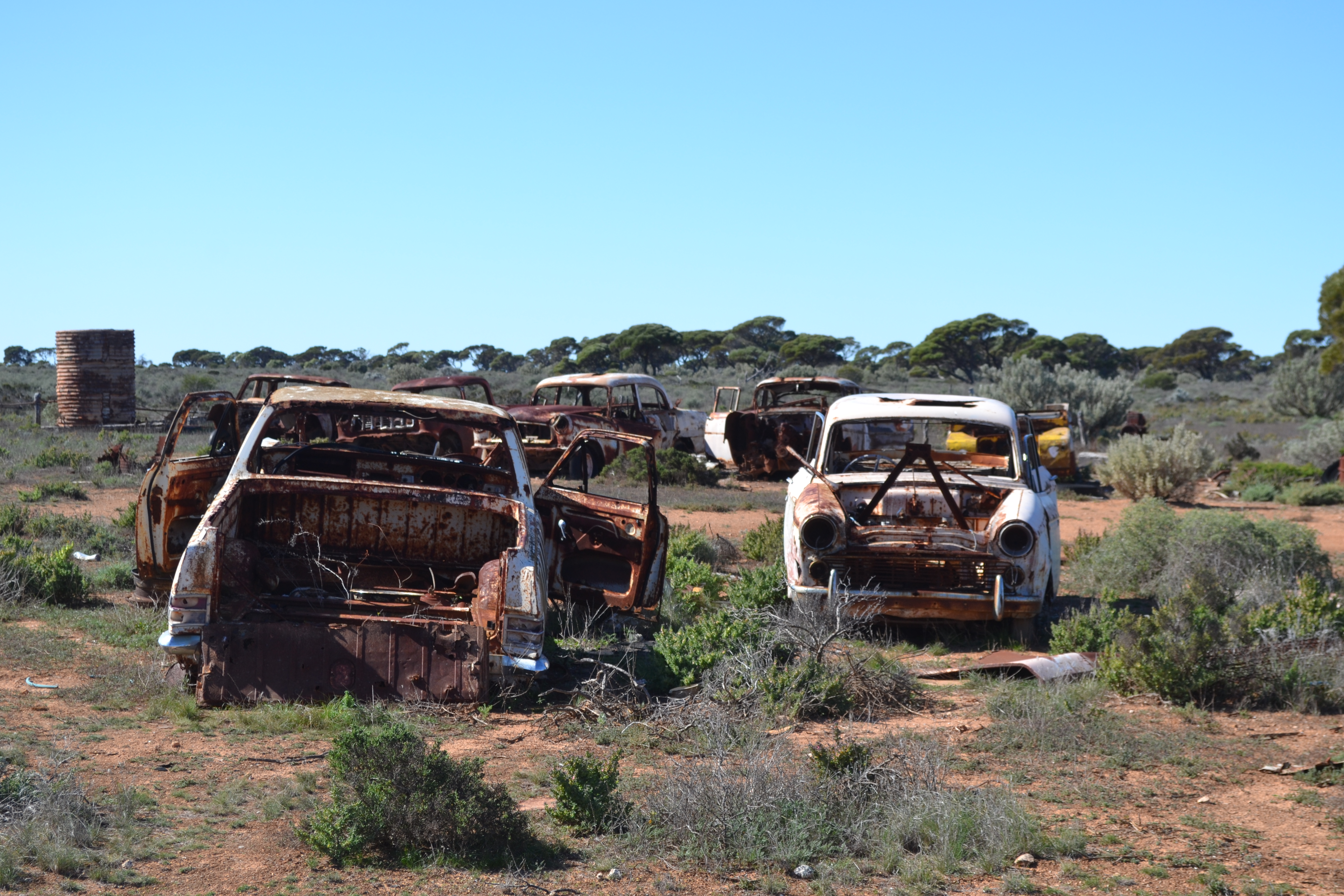
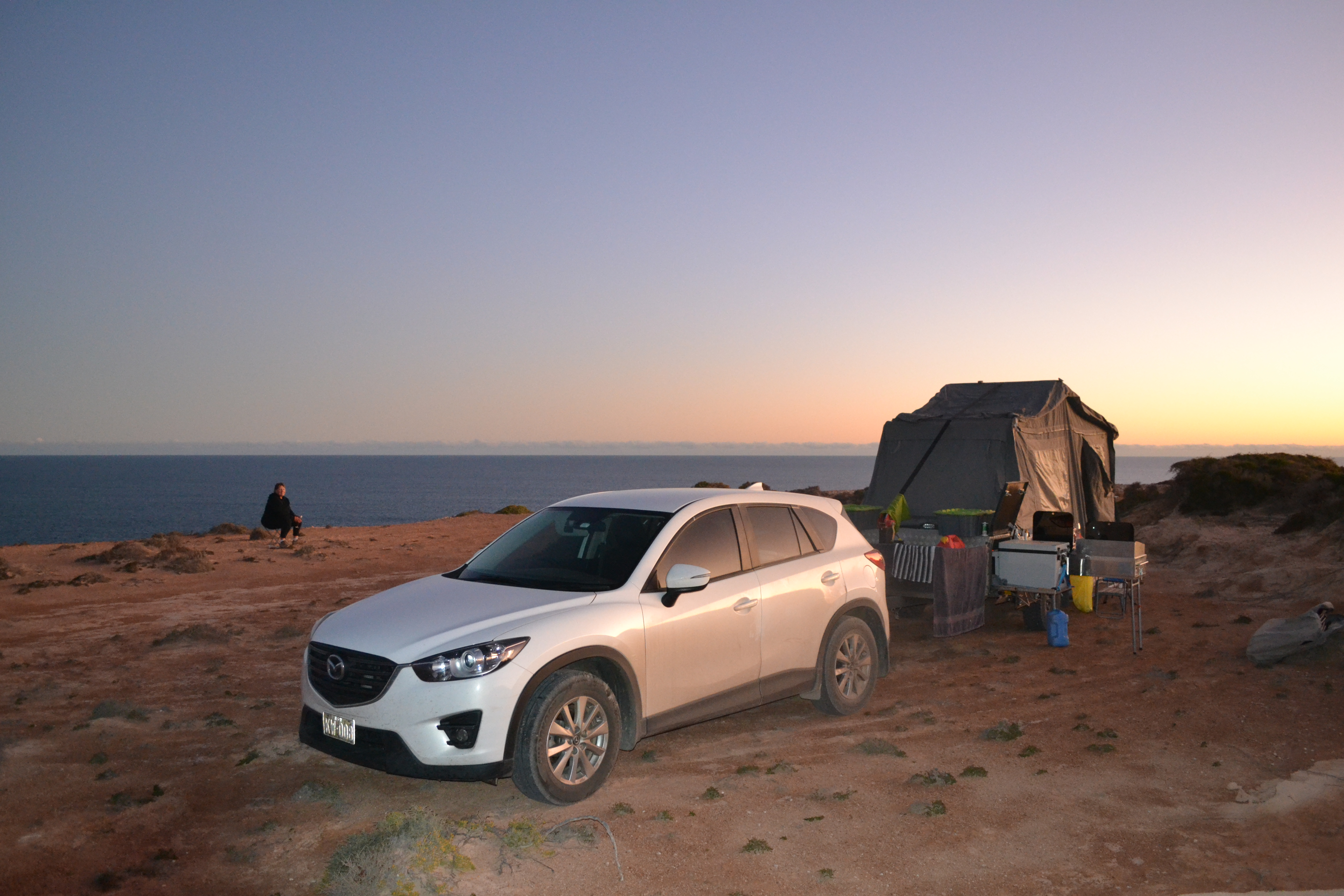
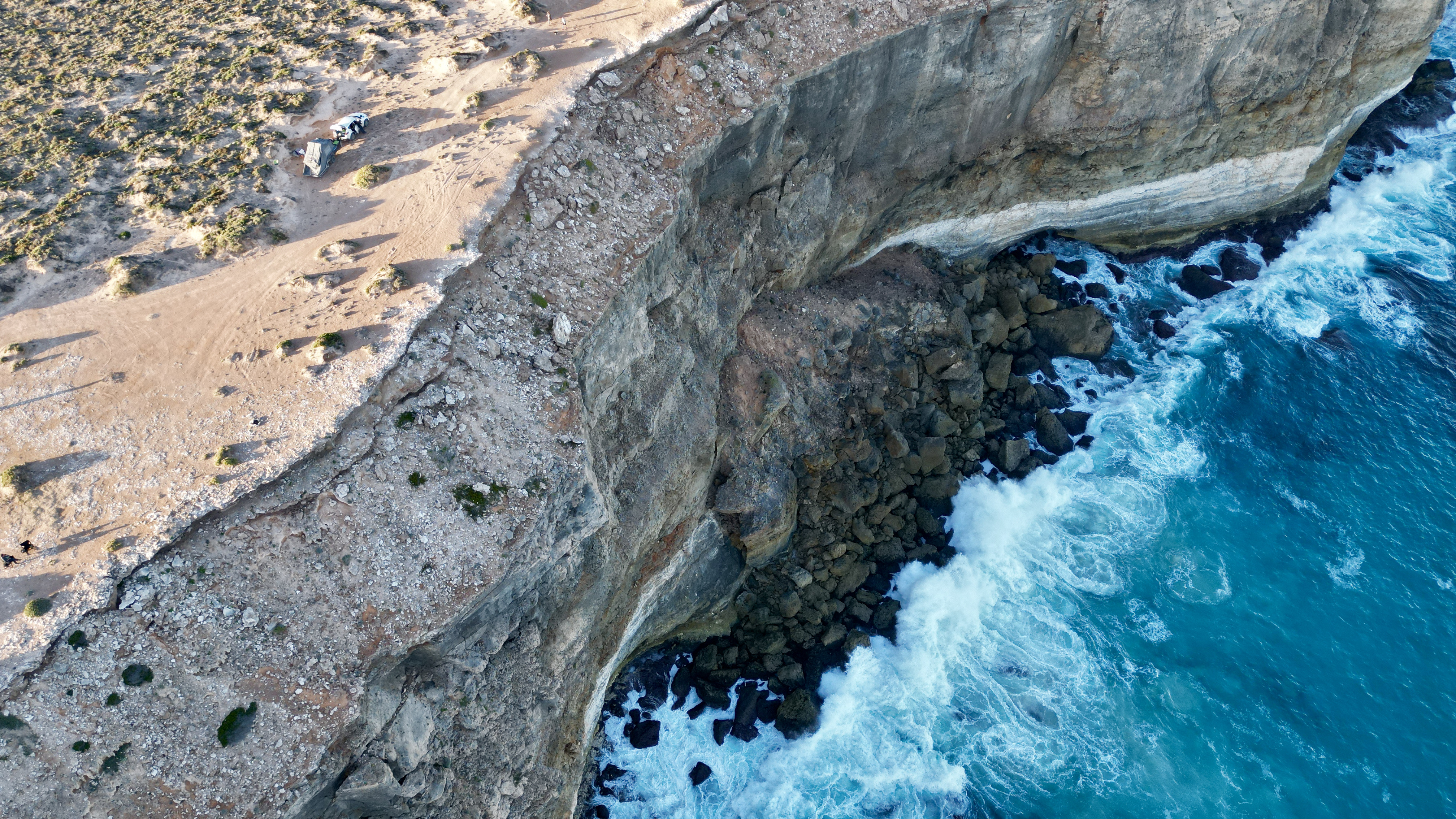

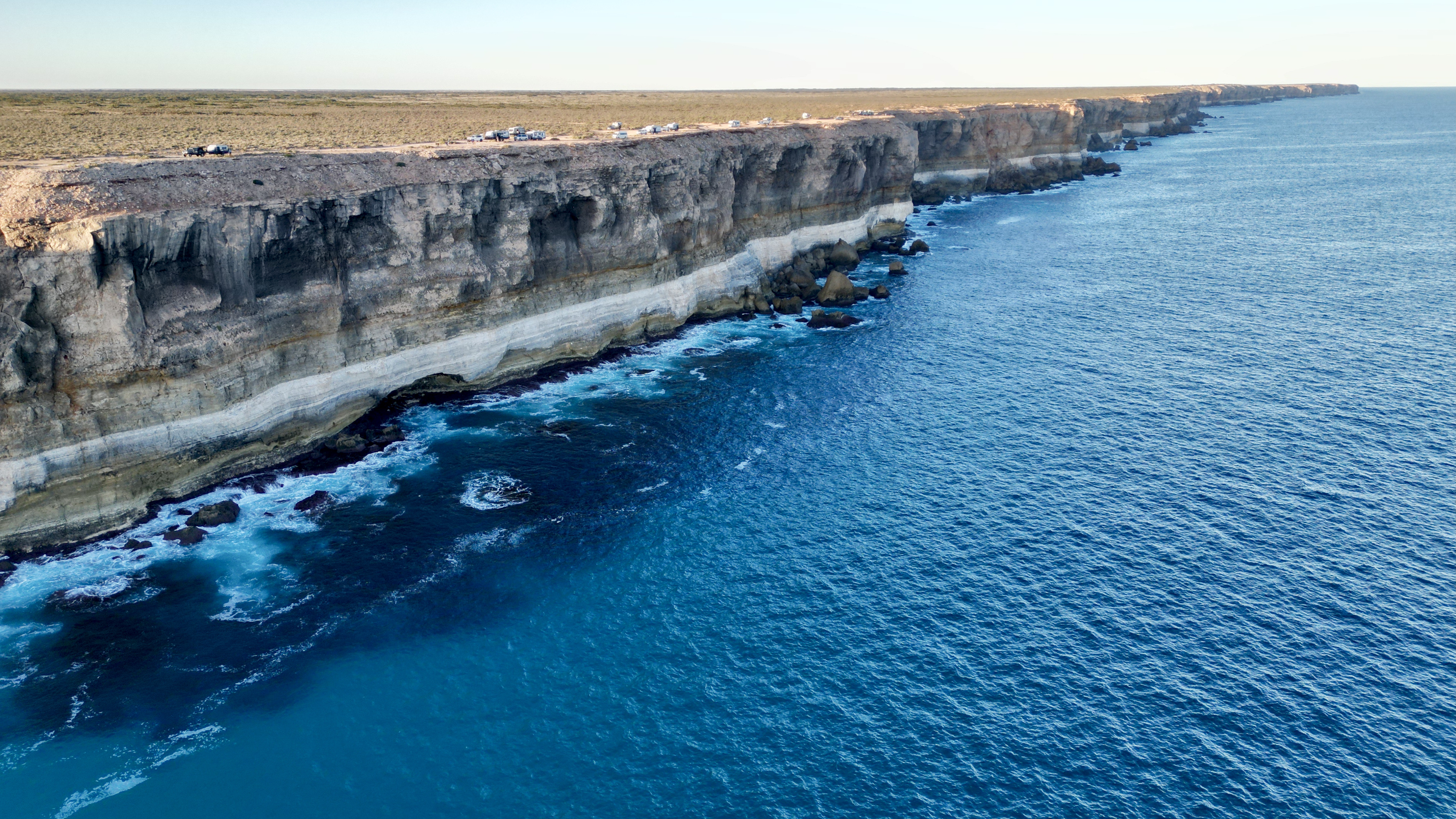
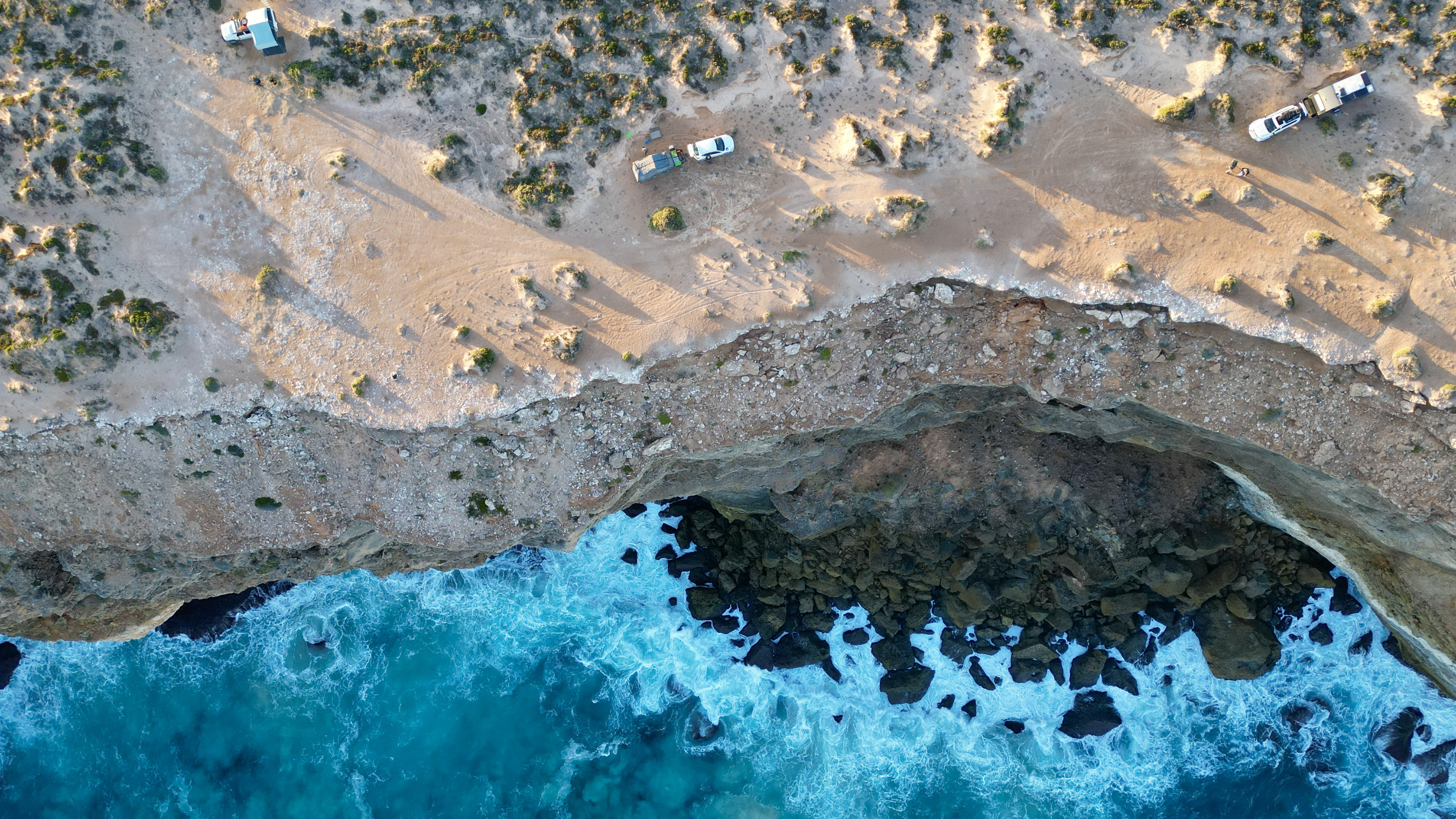
This time we were careful not to miss the dirt road turnoff. They are challenging to see as you hurtle past at 100 km per hour. One needs to look for caravans dotting the skyline in the distance, which usually indicates a hidden road somewhere. The first turn was about 50 km back, which was better than it could have been. This was a different stop to the way over and, at first look, not as pretty but still a very dramatic cliff line. We found a spot maybe 10 m from the edge, and as dusk was close, Ken immediately put up the drone. It was less windy than our previous stay, or so I thought. Settling for the night, watching the sunset slowly slip away, the wind blew lightly. We were only having soup that night as our supplies were getting low. It was just as well as the force of the winds increased steadily. They were not gale force or cyclone-style winds but on the edge of the country and no obstacles except a bit of canvas to break the sound; the trailer groaned a little, and the canvas complained bitterly as the wind thumped against the frame. Not our best sleep and our Cub Explorer was indeed tested, but seeing the drone video the following evening, we decided it was worth the discomfort. Interestingly,
the footage revealed the instability of the cliff edges. Much evidence of crumbly rocky side walls where huge chunks had fallen into the ocean below. It was a grand site to see the coastline stretched out before us. We are such a tiny part of this beautiful country.
Continuing east to Penong with around 60 km to go, we ended up stuck behind two road trains, 50 metres each in length. Things became interesting when a van behind was edging out to overtake. We were preparing to pull to the left, thinking he was on a suicide mission. We could clearly see how long that road train in front of us was, and adding our 10-metre length made this a little risky. Thankfully he thought better of it at that point. The next movement was that of a long truck that overtook the van and sat behind us. We could not overtake as we could not get up the speed to cover the distance. We assume the road trains and the trucks were talking on their CB radios as he shortly pulled out to overtake. We pulled to the side, watched him go, and were amazed when a second-long truck followed him. They both pulled in quickly in front of the first road train minutes before a caravan heading west appeared. I let out a sigh of relief just as two 4WD motor vehicles come racing up beside us, overtaking ourselves and the road train. I was certainly holding my breath. They made it with little to spare, and we finally were able to relax. This was the most significant number of vehicles we had seen close together and the most tactical movements in that short 50 km distance out of the total 1200 km. Getting close to the end, we turned off at Penong to drive down to Lake McDonnell. This lake is known for its colour. Arriving, we can immediately see the pink lake on one side and the blue lake on the other. Turning a bend, you can see the green lake come into sight. Of course, the colour is affected by many things which changes the depth and contrast of the colours. With the sun shining, the colour was easily distinguishable, and Ken wanted to put the drone up to see if the colour would be more profound in the video view. In the process, he decided to try to have the drone follow our moving car. This was not necessarily a success, as a low battery forced him to land the drone in an unknown spot. Turning back as soon as we could, we had to keep our eyes peeled for a small foreign object sitting along the roadway. We were lucky enough to find it pretty close down the road. Drones are not cheap, so we were happy to have him safely back in its case.
We were heading back to Penong, onto Ceduna, and somewhere to stay that night. We found a lovely caravan park out of town where we completed the much-needed washing. The big question was whether to continue our travels and explore South Australia. We are getting closer to home and missing our family and friends. The weather is getting colder, and we are tired. Given these feelings, we decide to make SA another trip and head directly home. Once this was fixed, we knew we would have to travel back through Broken Hill, Cobar, and home. I quickly endeavoured to find out if there were things we needed to catch on the way home. A fellow traveller recommended the granite outcrop at Wudinna on the way to Broken Hill. Wudinna, pronounced Wood’na, is around 210 km from Ceduna, an excellent spot to stop for lunch and a break from driving. We pulled into this small town which is neatly presented. We found a lovely little café for a light lunch. Once refreshed, we headed off on the scenic drive.
Not too far out, we found ourselves at Polda Rock. It looked pretty extensive from the car, and once you embark upon the climb, you realise it is enormous. Once at the top, there is a 360 view of all the pastoral lands surrounding it. We saw hundreds of tiny tadpoles in a pool of water on the top of the rock. Not something you would expect to see at that point. A little dam at the base catching water runoff was being enjoyed by a couple of ducks and several birds. The simplicity of seeing nature excel is always fascinating. These outcrops of rock emerge unexpectedly out of the bush and appear to reach for the sun. It makes one wonder what this country looked like millions of years ago.
There were many other large bodies of rock, with the last being Mt Wudinna which one could call a small mountain as opposed to a rock. It is impossible to photograph these monoliths. They are something you need to experience yourself.
Moving to Broken Hill, Cobar, while passing some small towns with their unique characteristics.
We are getting to the end of a very memorable trip. The camper trailer has performed exceptionally, and the car has managed brilliantly. Our memories are full, with thousands of photos to help us recall. We know we travel well together and have learnt a lot about Australia’s outback and western perimeter.
I hope those reading this blog find it interesting. For some readers, a simpler version would be better, but when reading travel information, you miss the little things which make up the many moments when there is no wow factor to fill your senses. These are the times you tend to remember the most, or at least I do.
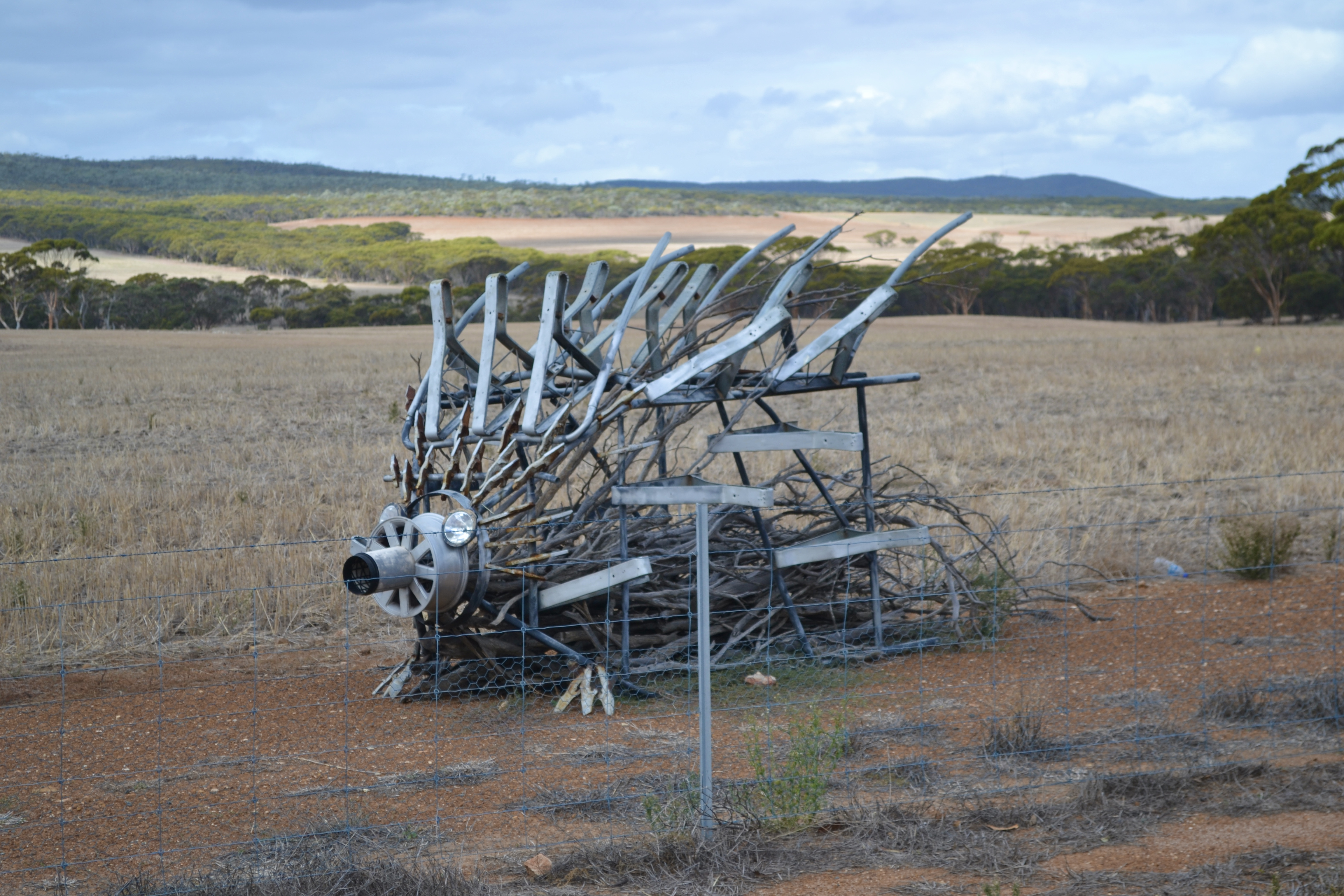

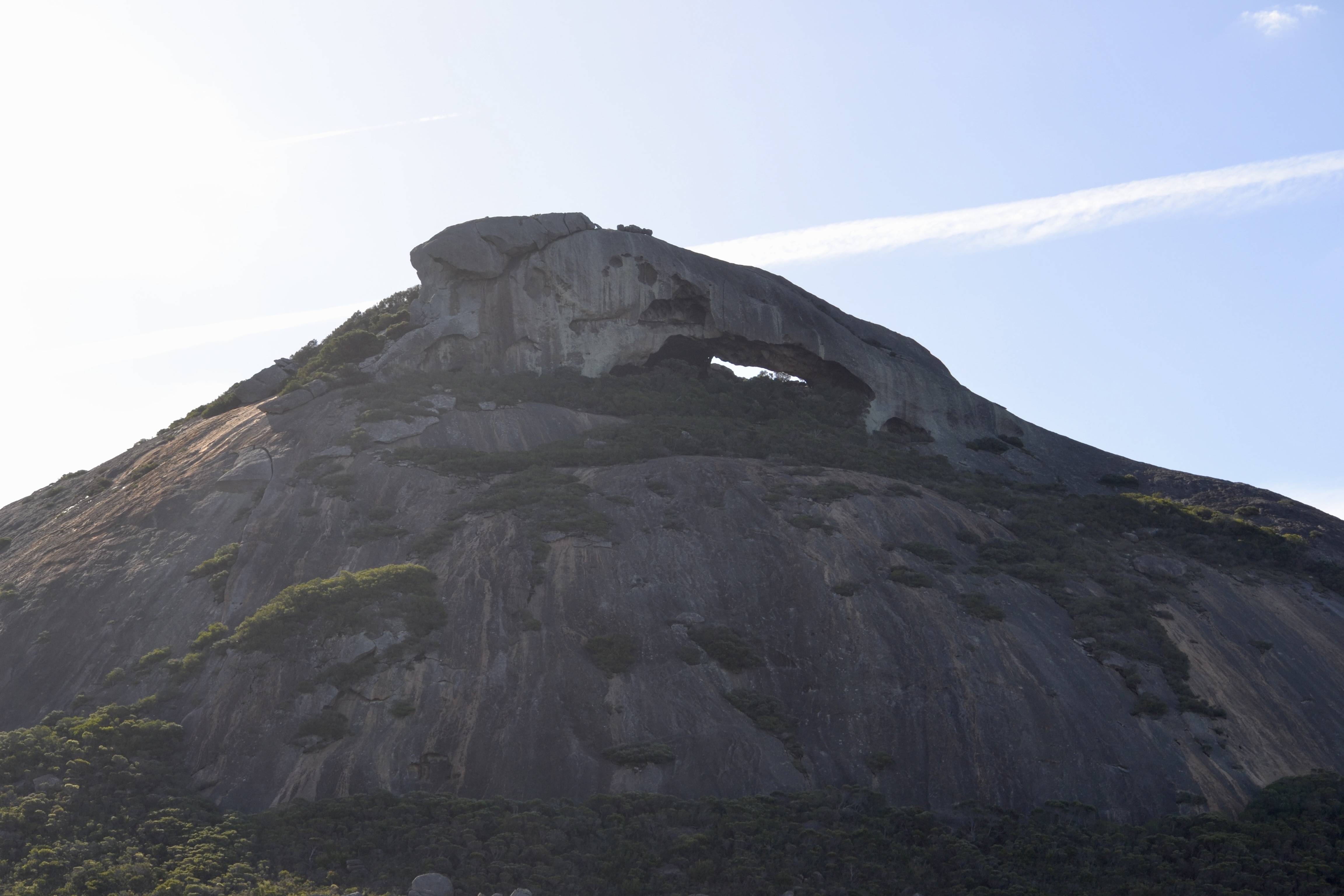


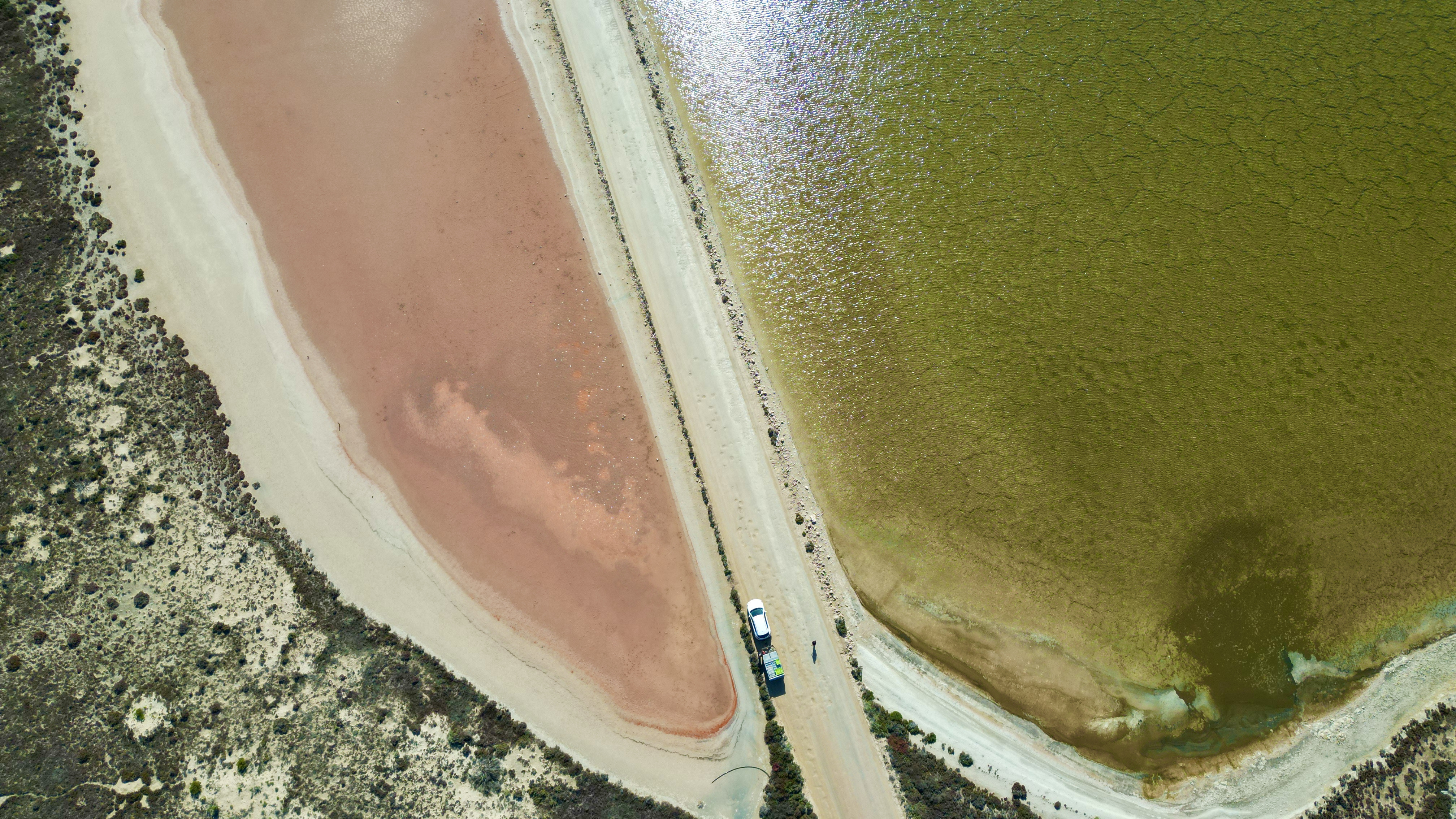

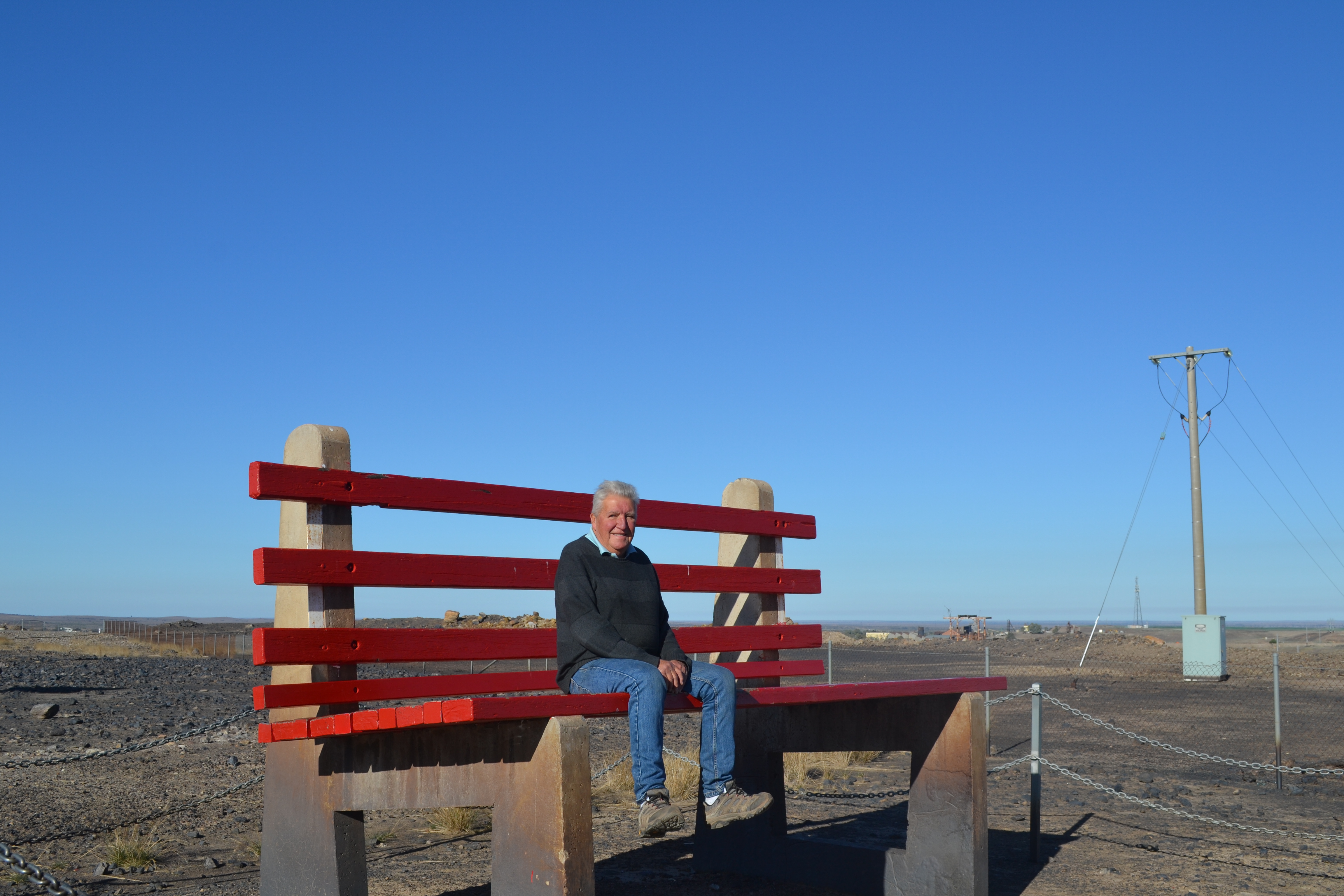
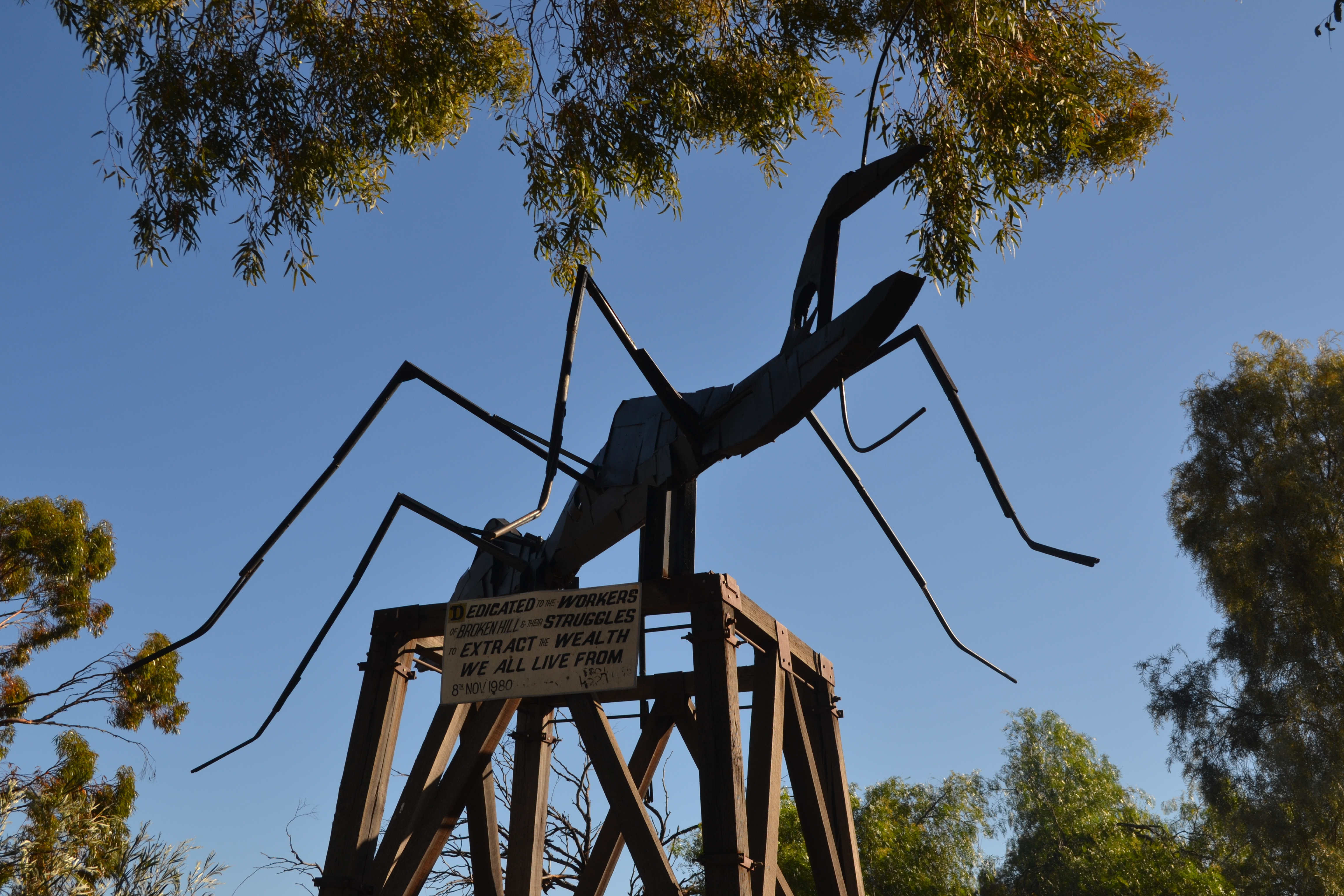
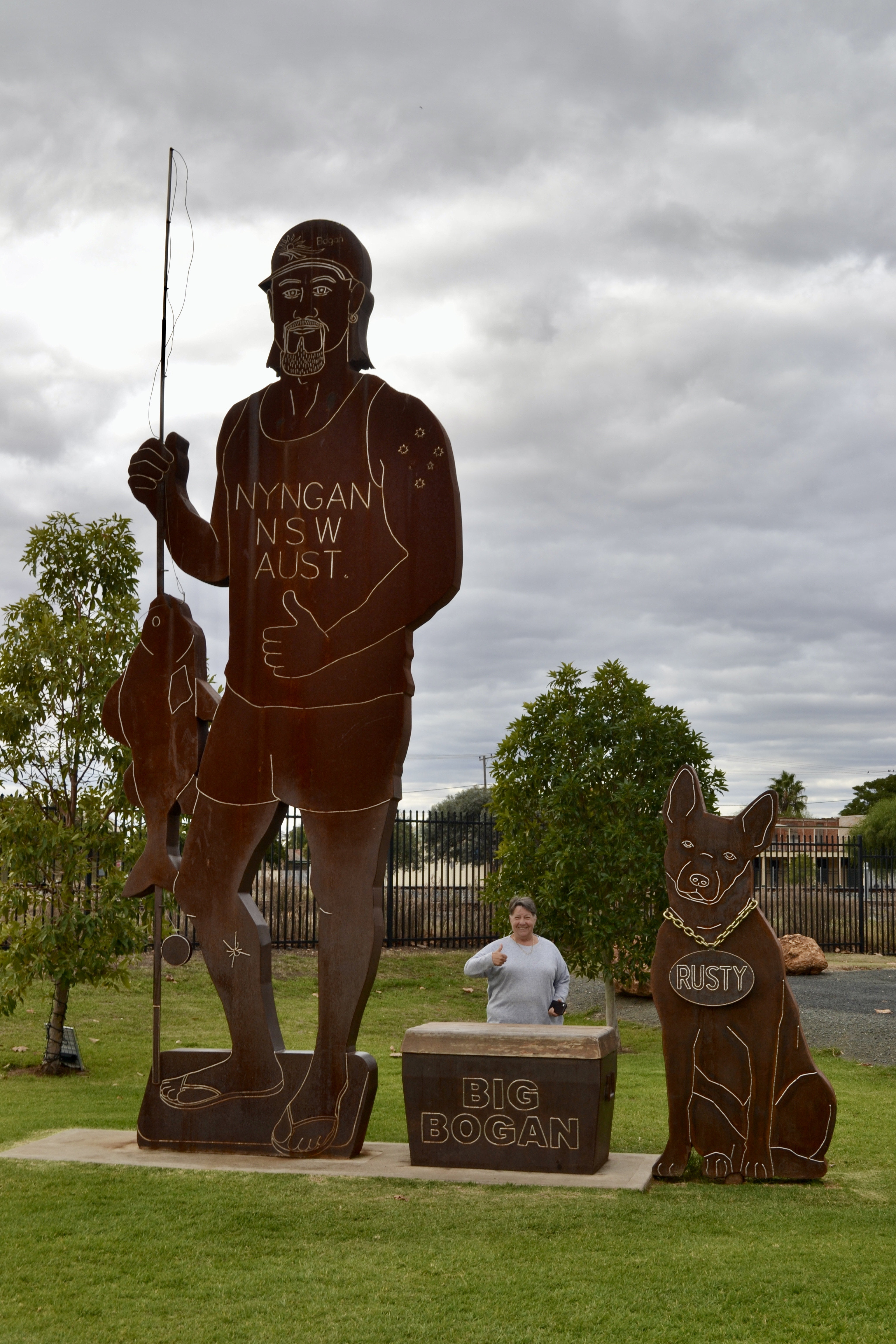
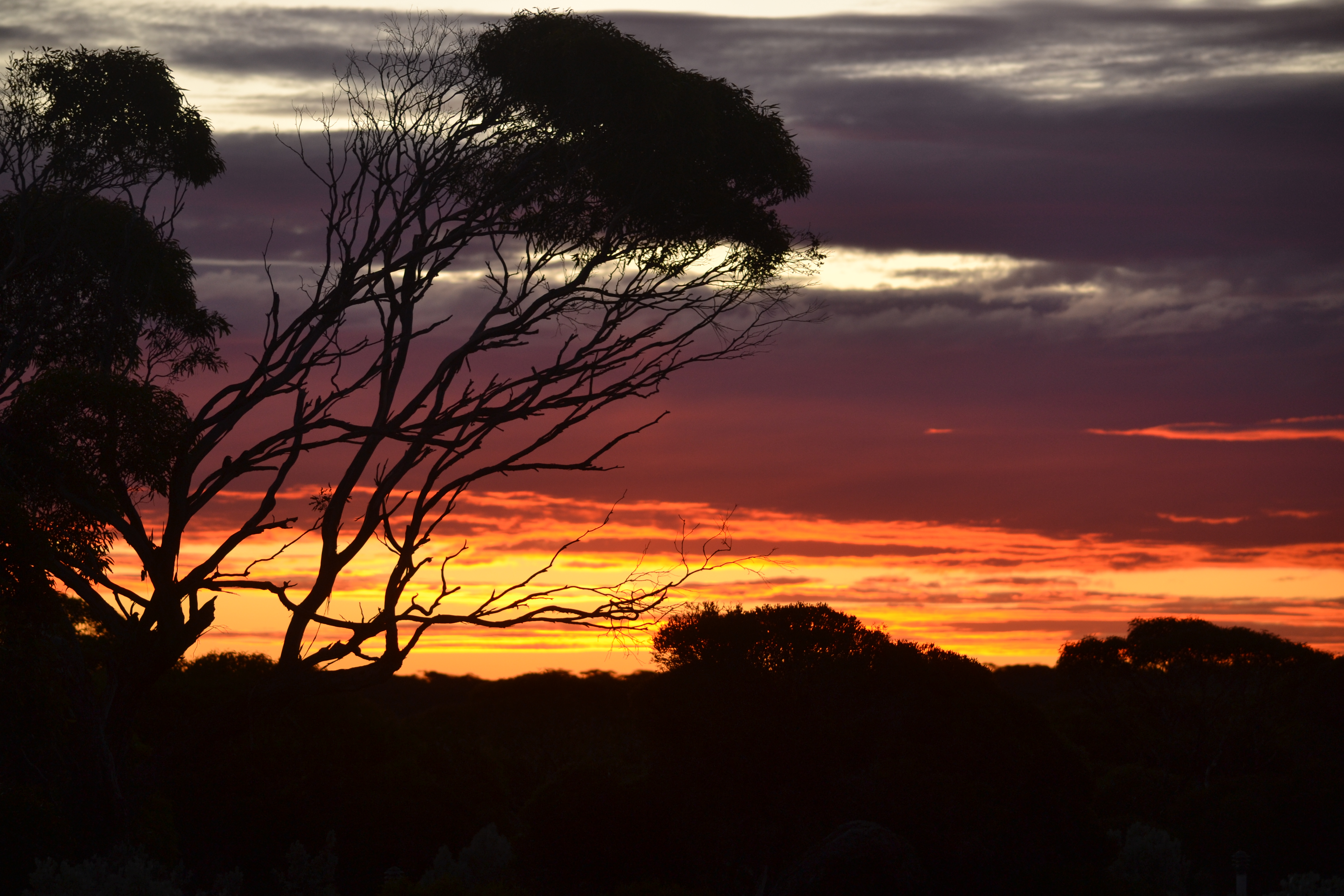
Thank you for reading, and hopefully, I will have more small and extensive trips to share with you all.
Please feel free to leave any comments and if inclined please subscribe below,